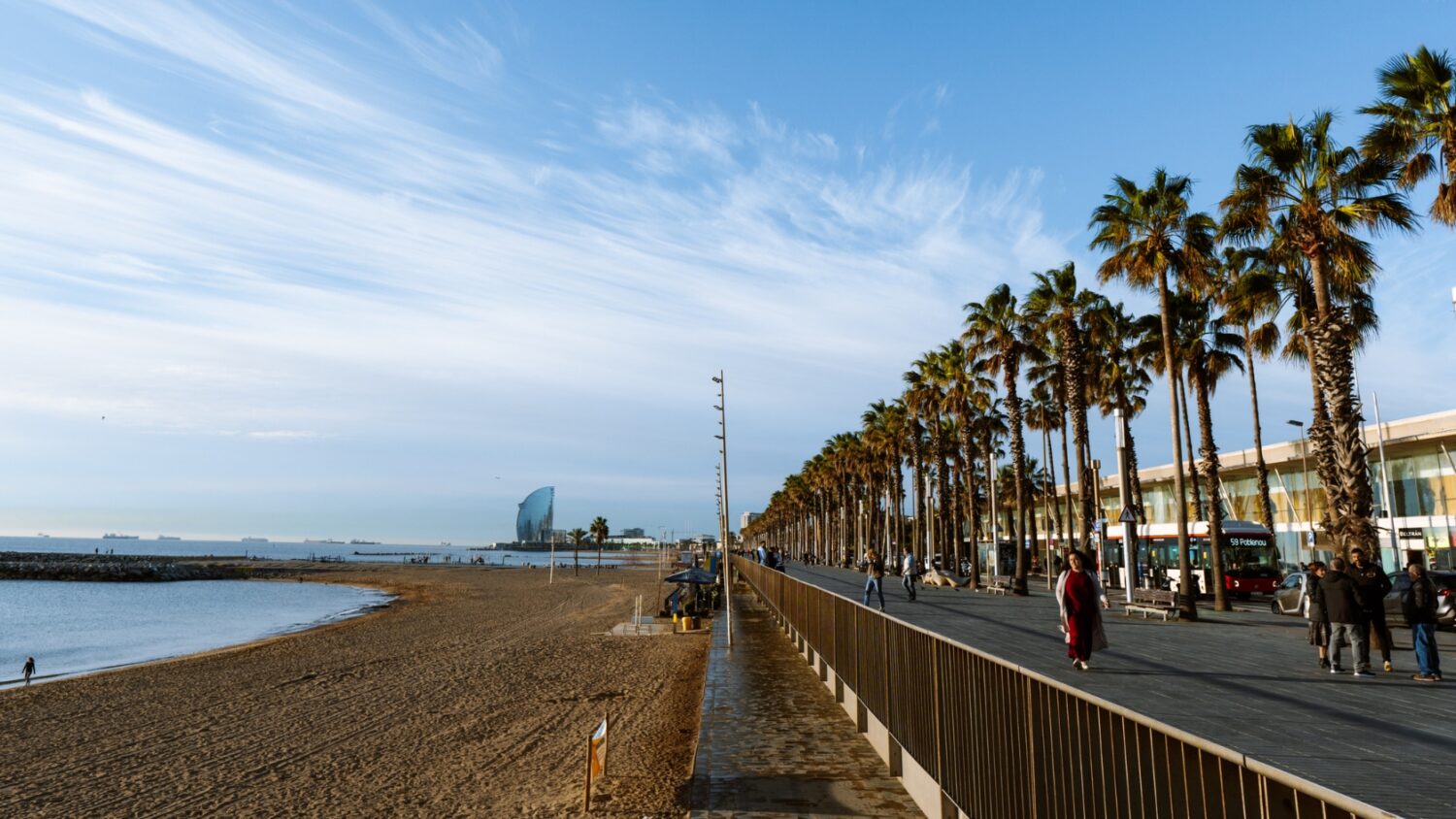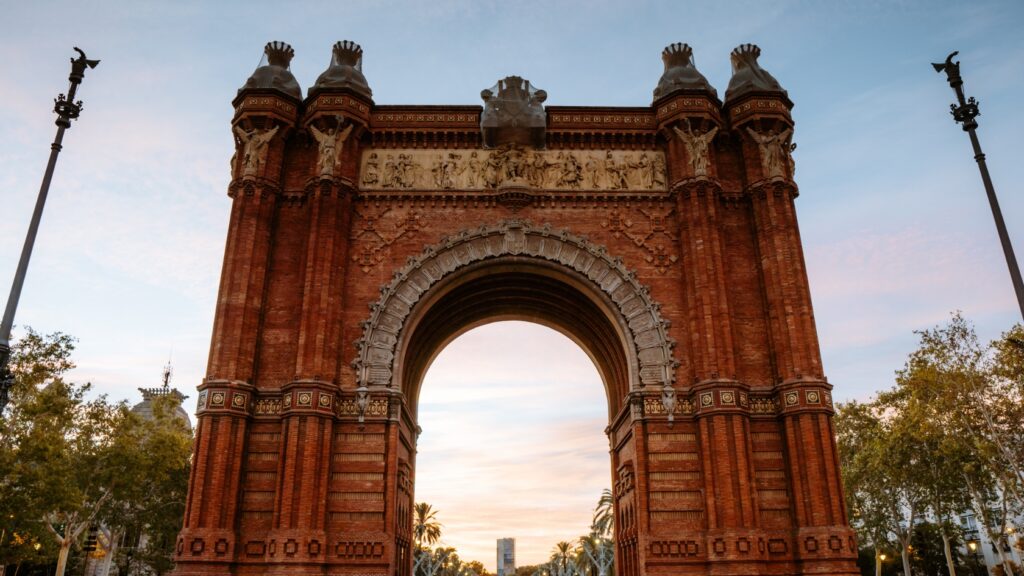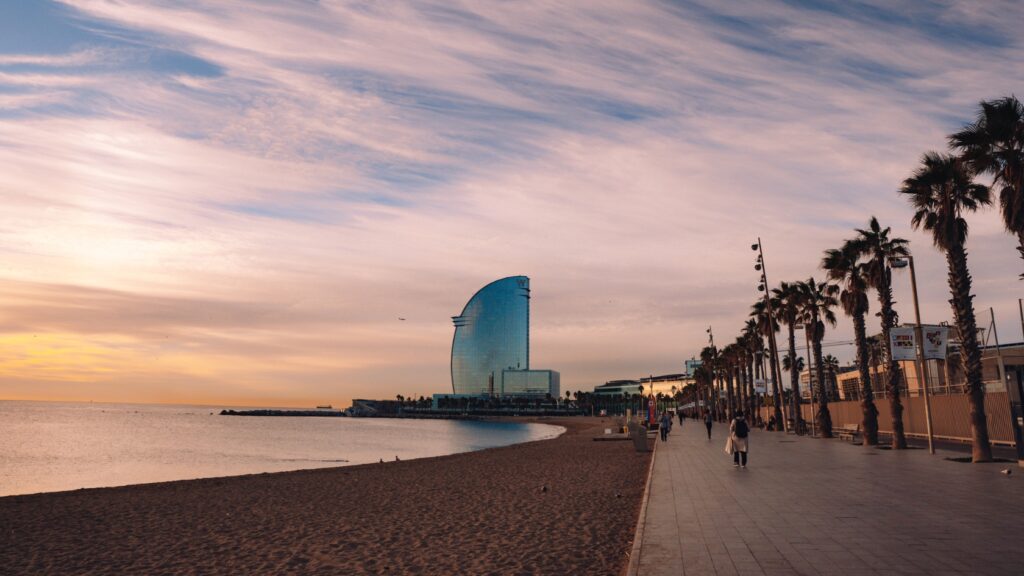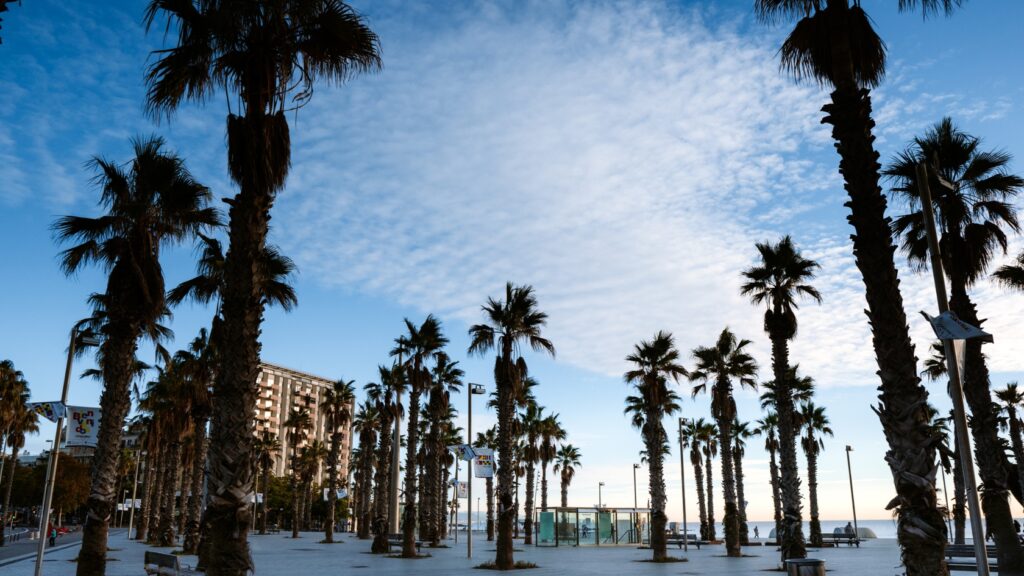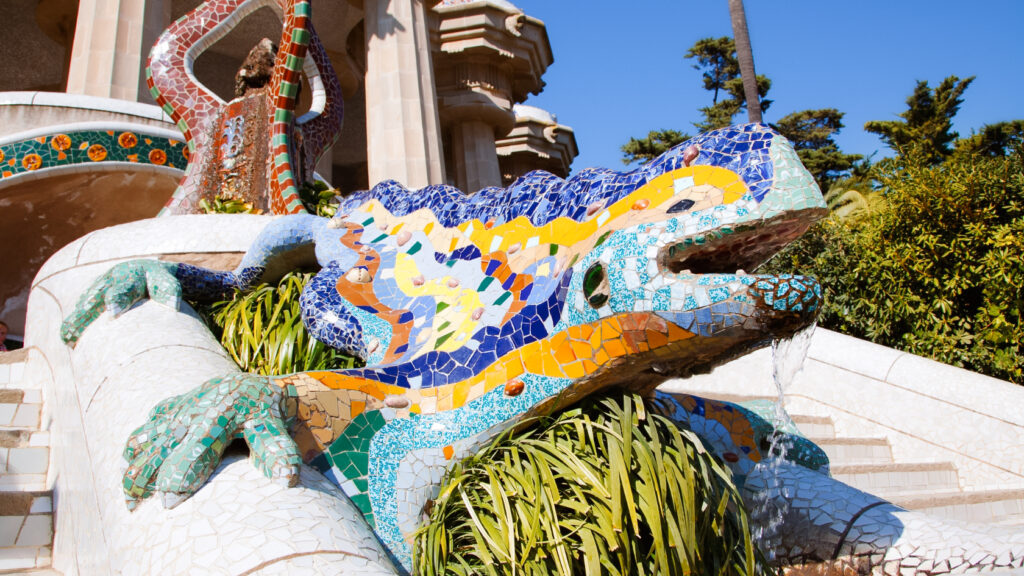Barcelona is one of the most beautiful cities in Europe. But it is also one of the most expensive. Still, it offers plenty of ways to enjoy Barcelona if you’re travelling on a budget. Here’s a list of the 10 best things to do in Barcelona for free.
Things to Do in Barcelona for Free
1. Admire the exterior of the Sagrada Familia
Most famous cities have an icon for which tourists from all over the world flock. London has Big Ben, Milan has the Duomo, Amsterdam has the canals, Pisa has the Leaning Tower and Barcelona has the Sagrada Família, designed by Antoni Gaudí.
Sagrada Familia Basilica in Barcelona is monumental, unique and controversial at the same time. Few monuments evoke such strong emotions. The English writer George Orwell described it as “hideous”, Salvador Dali as “a terrifying and poisonous beauty”.
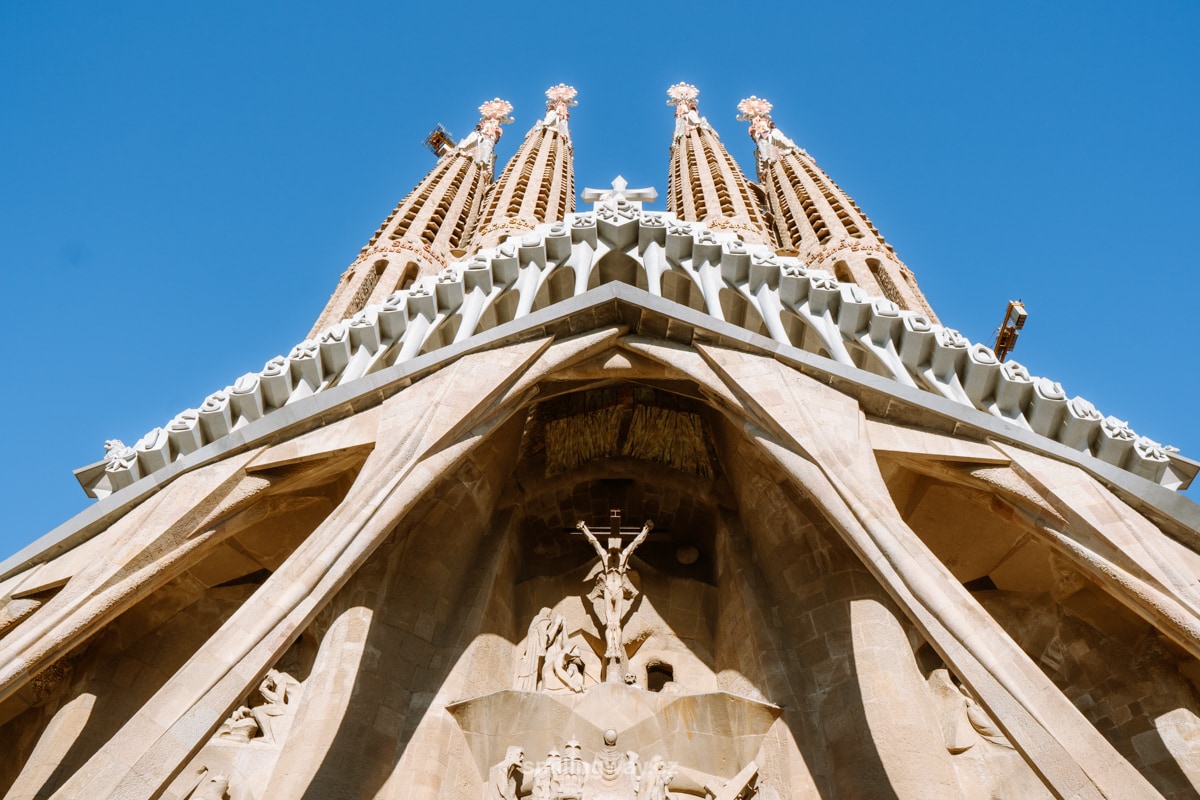
Although the interior of the basilica is beautiful, the exterior alone will take your breath away. With so many intricate details, it will take time to see everything.
The facade of the Sagrada Familia is incredible. You’ll find plenty of Christian symbols here, as Gaudí’s intention was to build the last great shrine to Christianity. The basilica was to tell the story of Jesus and represent a huge bible.
Sagrada Familia has 3 completely different and unique facades, each symbolizing a different stage in the life of Jesus Christ. On the east (by the park with the pond, where the main entrance is currently) is the facade of the Nativity of the Lord. It is the most ornate and the most representative of Gaudí. It was completed first and has 4 towers, which symbolize the apostles.
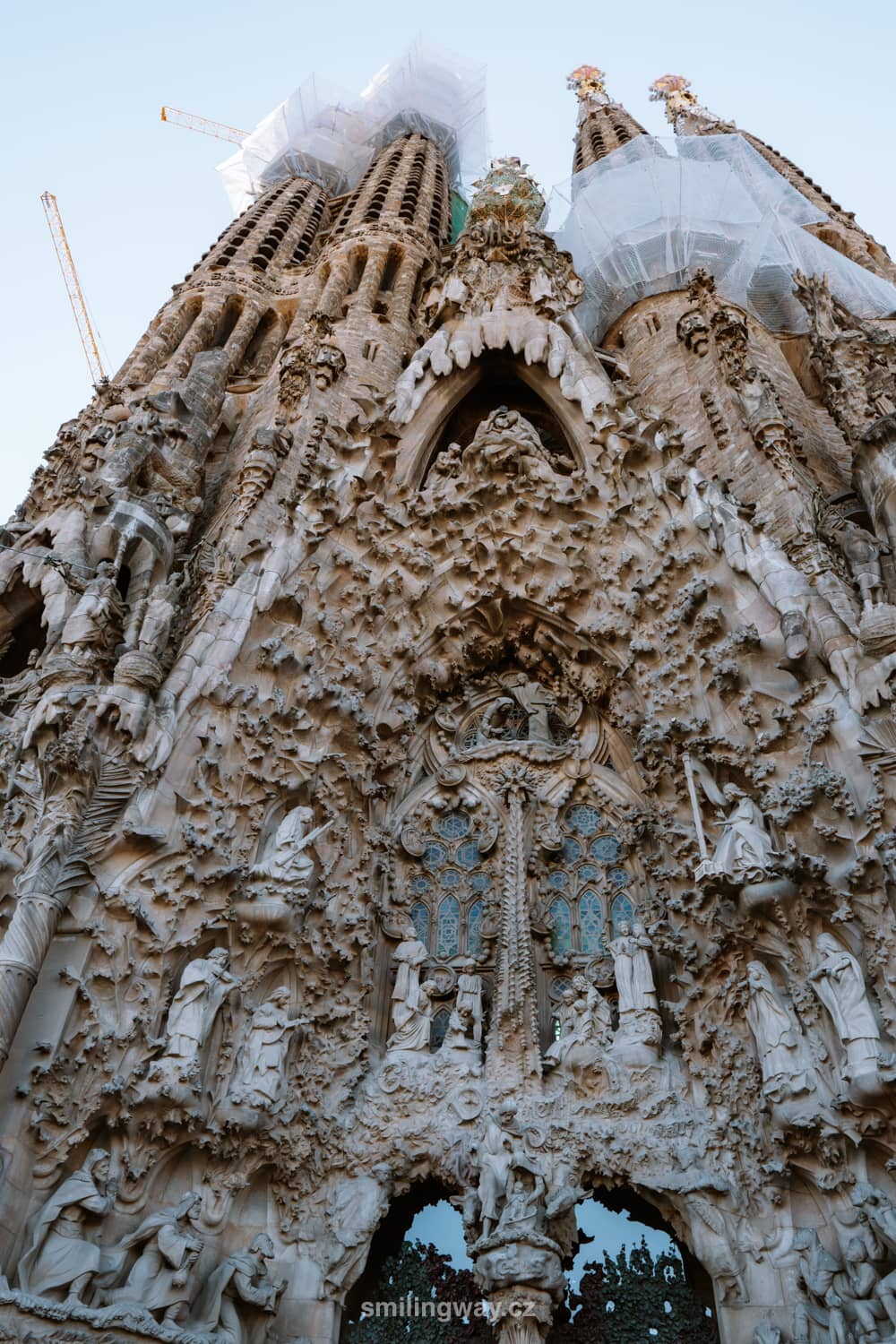
To the west (near the second park) is the facade of the Passion, which is dedicated to the crucifixion of Jesus and human sin.
The third façade is called the Façade of Glory and tells of Jesus’ glory and journey to God. It’s not finished yet, but it should be most monumental. Having seen how breathtaking the completed facades are, we can’t imagine how monumental the facade of Glory can be when it is finished. Once the work is complete, the facade of the Glory will form the main frontage as it offers direct access to the central nave.
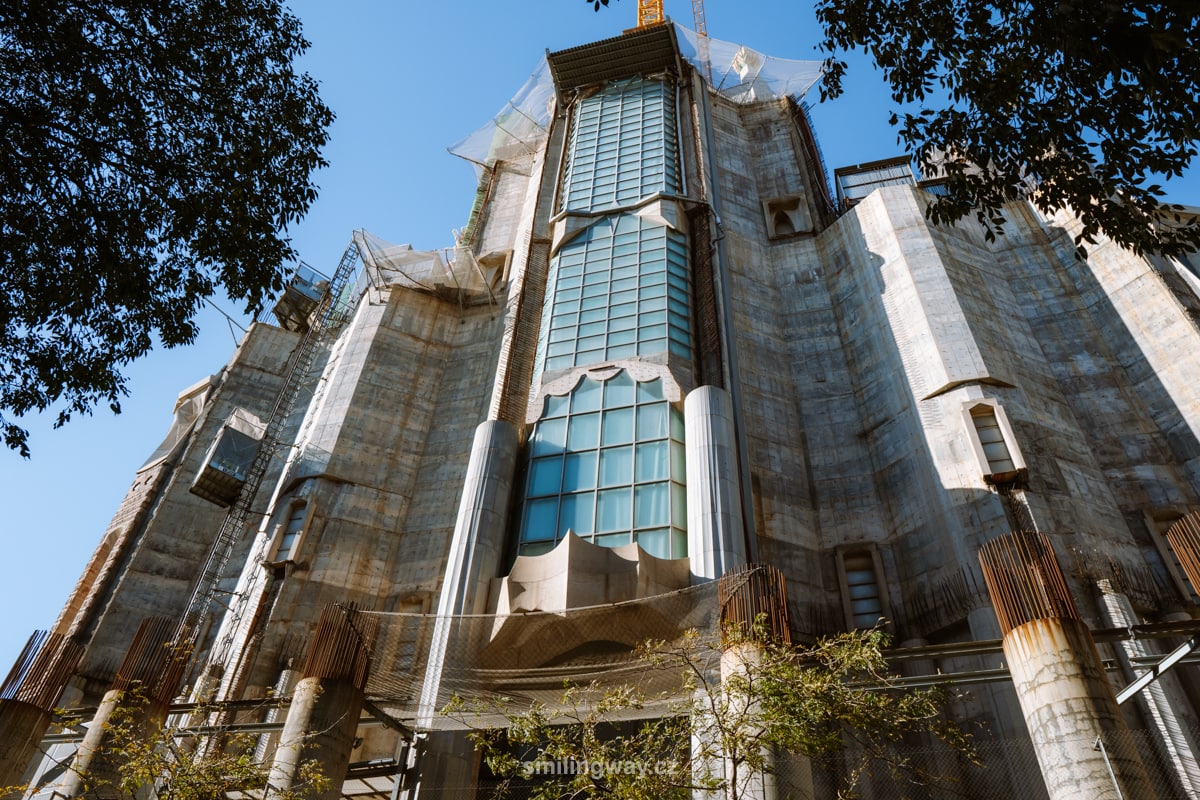
2. Walk along Passeig de Gracia
Passeig de Gracia is one of the most famous streets in Barcelona. A wide avenue lined with trees and elegant houses, home to luxury boutiques and five-star hotels. You’ll start at Plaza Catalunya in the city centre, which is also the starting point for La Rambla and other major streets including Passeig de Gracia.
Stay a while, sit down and watch the hustle and bustle of the city. Around the square are 6 sculptures representing the 4 Catalan capitals, wisdom and work.
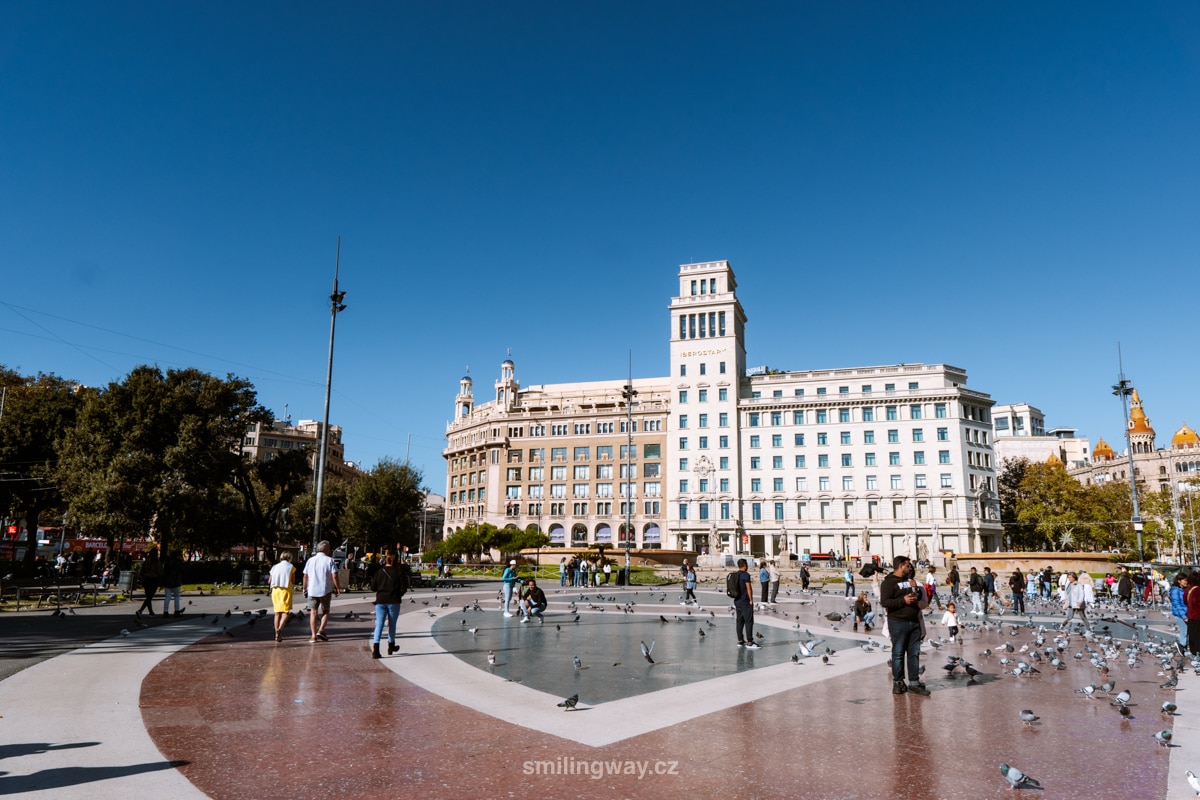
Passeig de Gràcia is home to two more of Gaudí’s masterpieces – Casa Batlló and Casa Milà (La Pedrera). Both houses are known for their unique design and are UNESCO World Heritage Sites (as is the Sagrada Familia). Their interior is unique, but the exterior is definitely worth seeing too.
Casa Batlló will win you over with its undulating façade, mosaic glass, ceramic panels, bone-shaped stone columns and a roof symbolizing the back of a dragon. The window openings act as eyelets and the balconies as protruding jaws. Ceramic tiles change colour according to the angle of view and light.
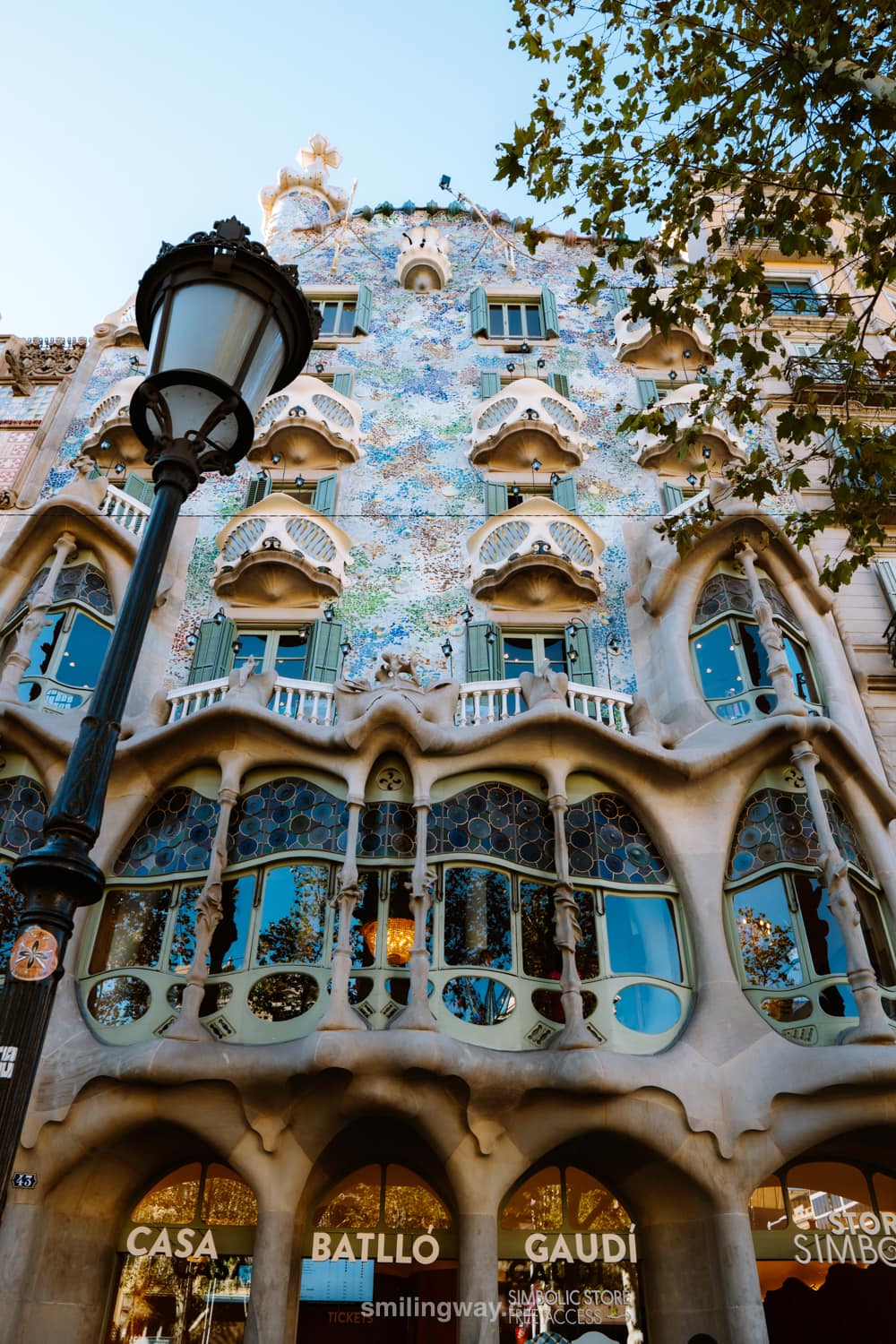
Next door is Casa Amatller, another beautiful modernist house designed by architect Josef Puig for chocolate industrialist Antoni Amatller.
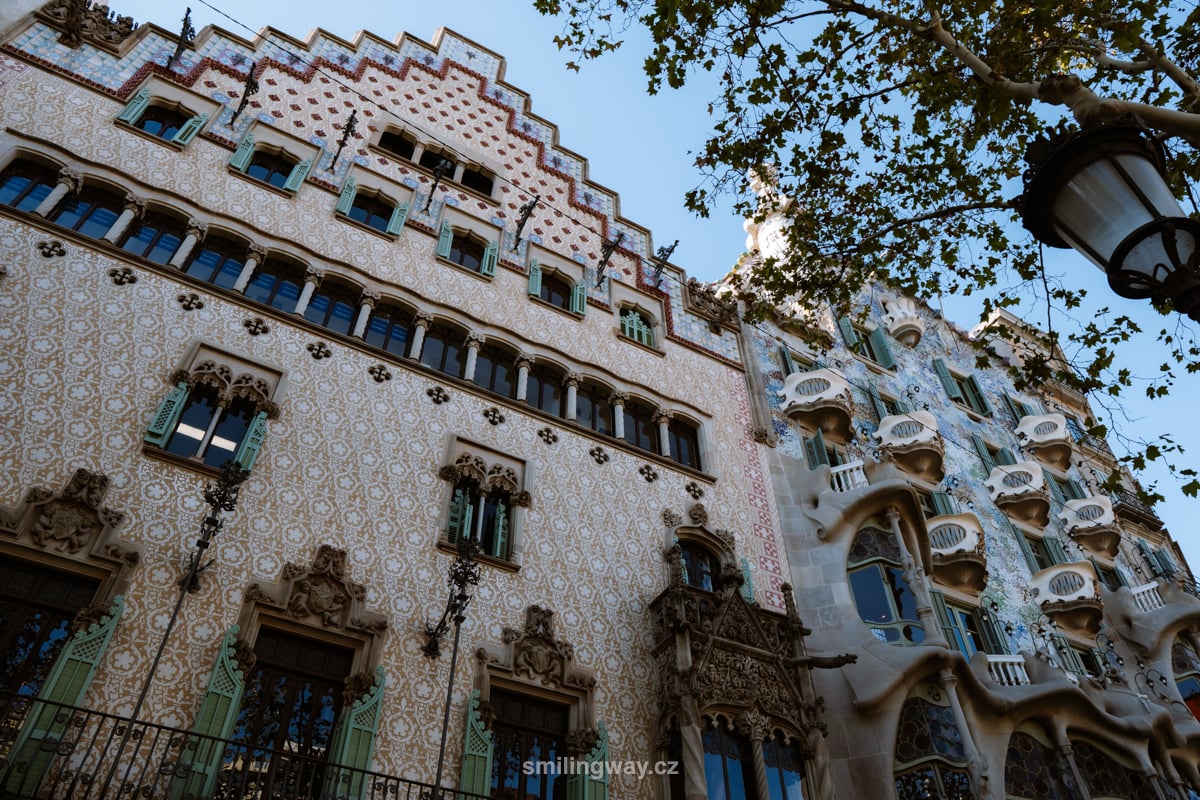
Cross the street and continue on to Casa Milà, located just a few minutes from Casa Batlló.
Casa Milà, also known as “La Pedrera” (The Stone Quarry), is another of Antoni Gaudí’s important works and one of the most characteristic buildings in Barcelona. The building is known for its undulating facade inspired by Mount Montserrat and its roof terrace, which features surreal chimney towers.
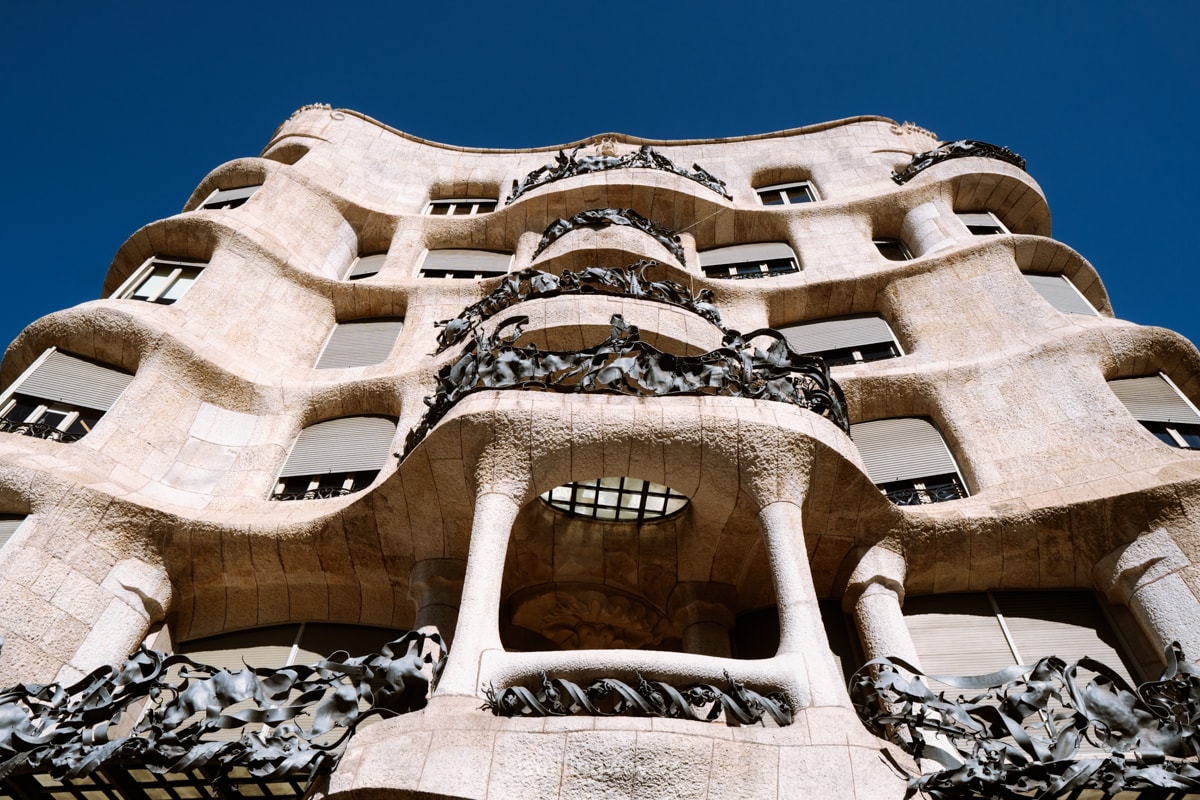
Gaudí designed Casa Milà without any straight lines, making it a great example of Gaudí’s natural style, inspired by nature.
☞ Check out the description and itinerary map of how to spend 4 days in Barcelona.
3. Get lost in the alleys of the Gothic Quarter
Gothic Quarter (Barri Gotic) is one of the most beautiful neighbourhoods in Barcelona. It is completely different from the Eixample district, which is crossed by Passeig de Gracia.
The Barri Gotic was formerly surrounded by city walls and was the heart of the city during Roman rule and later in the Middle Ages. The Gothic Quarter is characterised by its narrow cobbled streets and many historic corners that take you back in time. You can just walk around and enjoy.
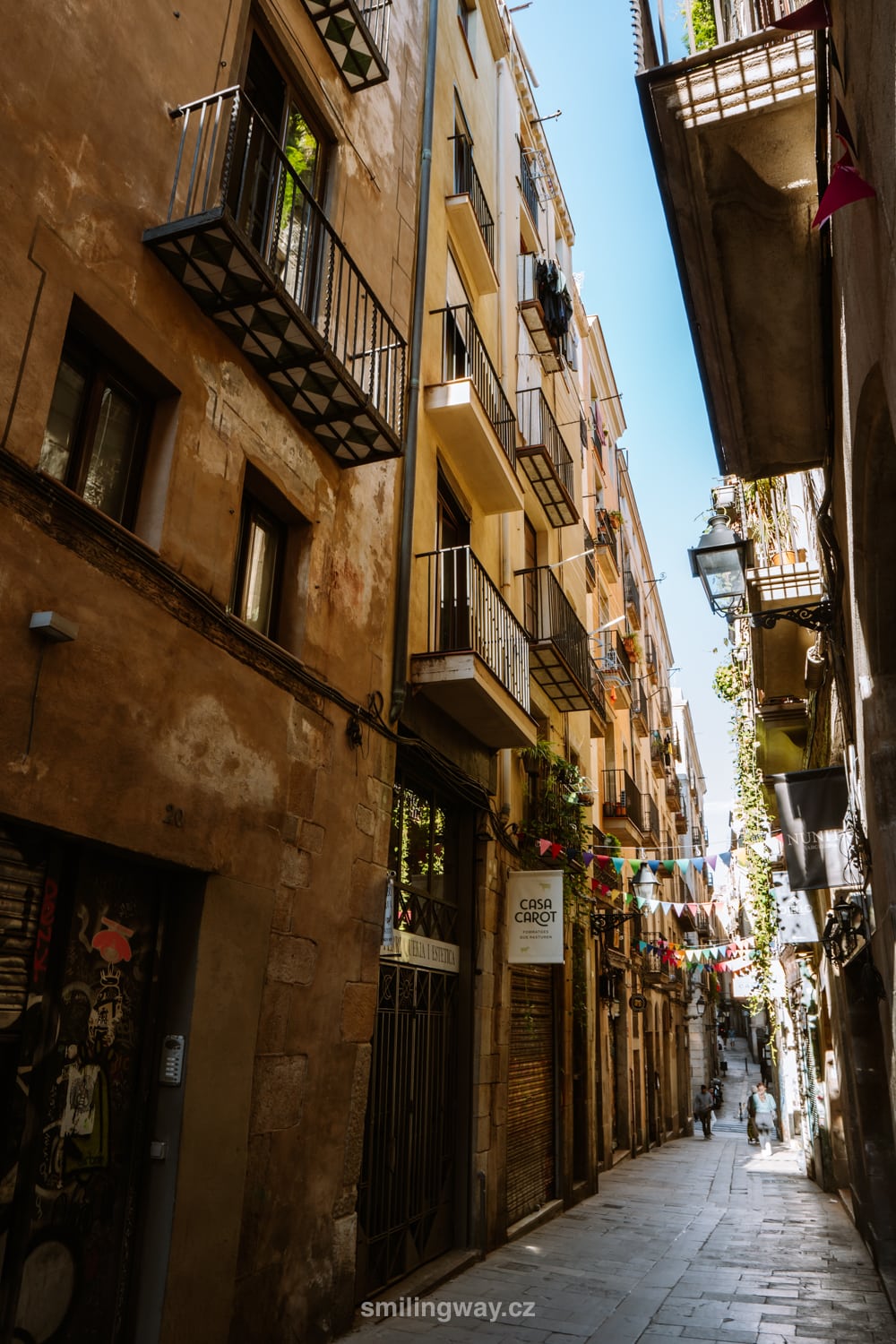
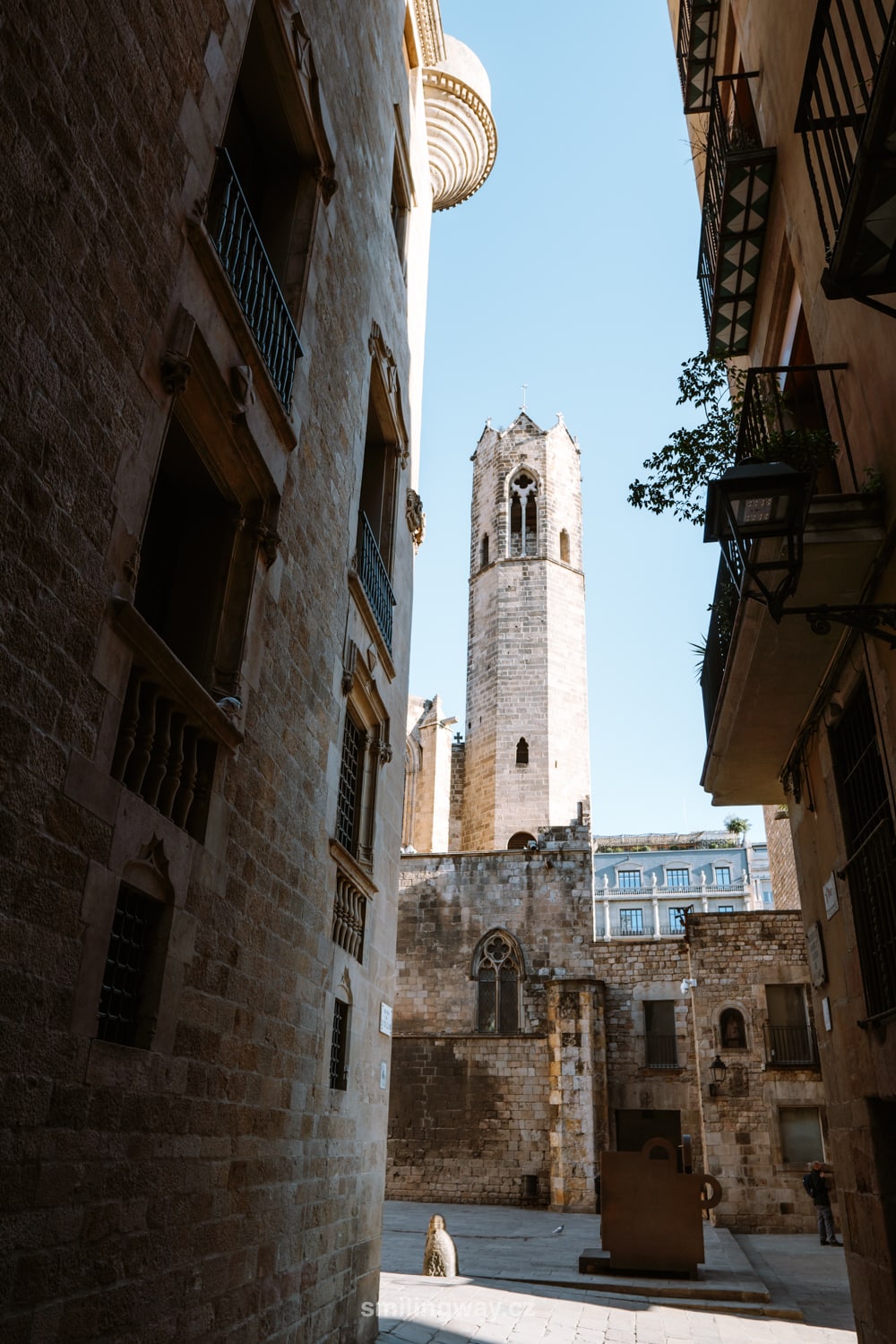
In addition, there are several attractions that you should not miss during your wanderings around the Barri Gotic in Barcelona:
Wall painting Kiss of Freedom
The mural Kiss of Freedom was created in 2014 to commemorate the 300th anniversary of the Catalan surrender in the Spanish War of Succession. At first glance, you see a kiss, but as you get closer, you recognize the thousands of little squares on which the locals have depicted what freedom means to them.
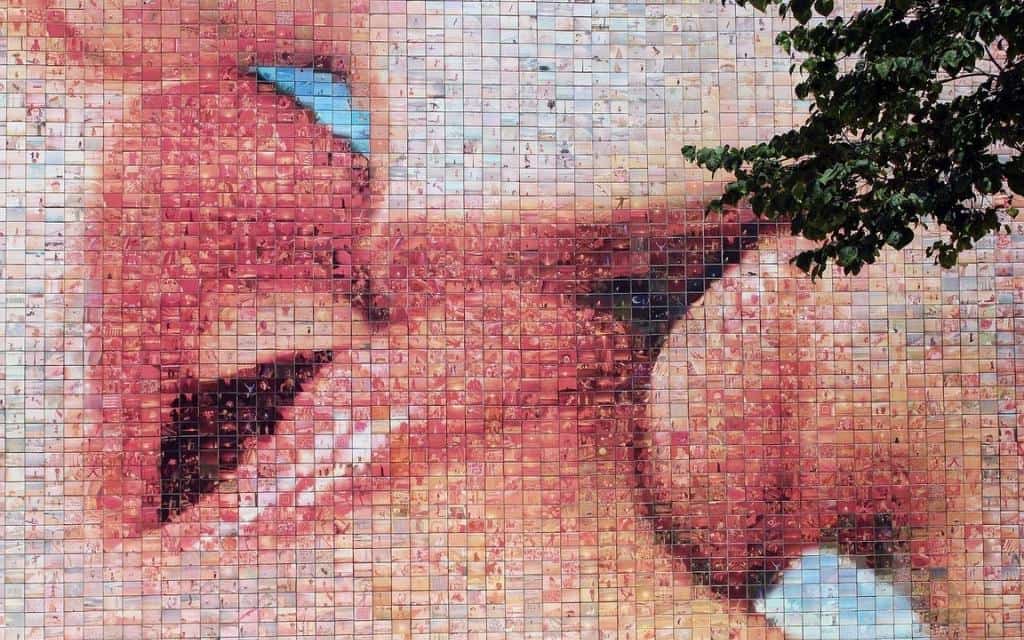
The painting is located a short walk from Barcelona Cathedral, tucked away behind the garden of a local restaurant.
Barcelona Cathedral
The Gothic Quarter is dominated by Barcelona Cathedral, the seat of the Archbishop, from which the cathedral takes its name.
Construction of Barcelona Cathedral began in the 4th century and continued intermittently until the 13th century. As a result, it mixes several styles, ranging from paleo-Christian foundations, Romanesque elements and Gothic facade to modernist and Renaissance stained glass. The exterior is so impressive that it is definitely among the best things to do in Barcelona for free.
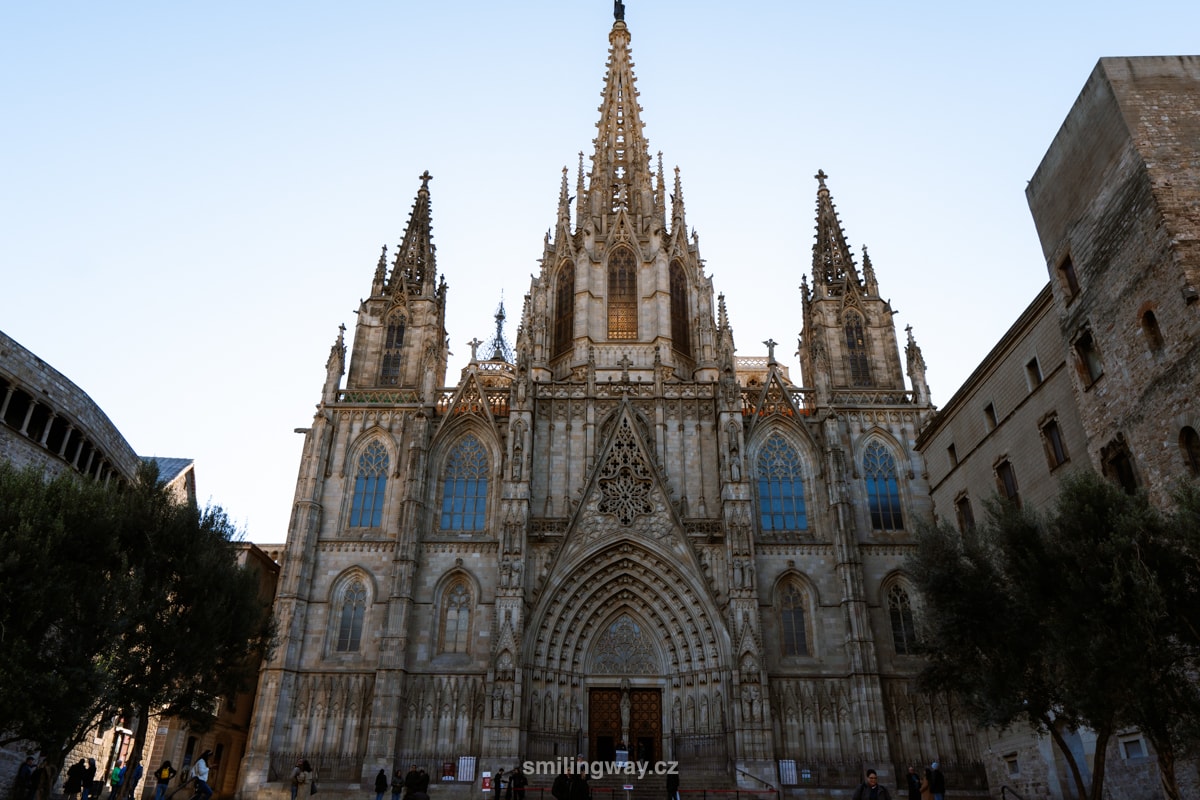
Plaça de Sant Felip Neri
Plaça de Sant Felip Neri is a small square that will hit you. To get here, take the narrow alley from the cathedral – walk along the right side of the cathedral and turn right until you reach a small square with a baroque church.
On the walls you will see the remains of the Civil War bombs that killed dozens of people (mostly children who sought refuge here).
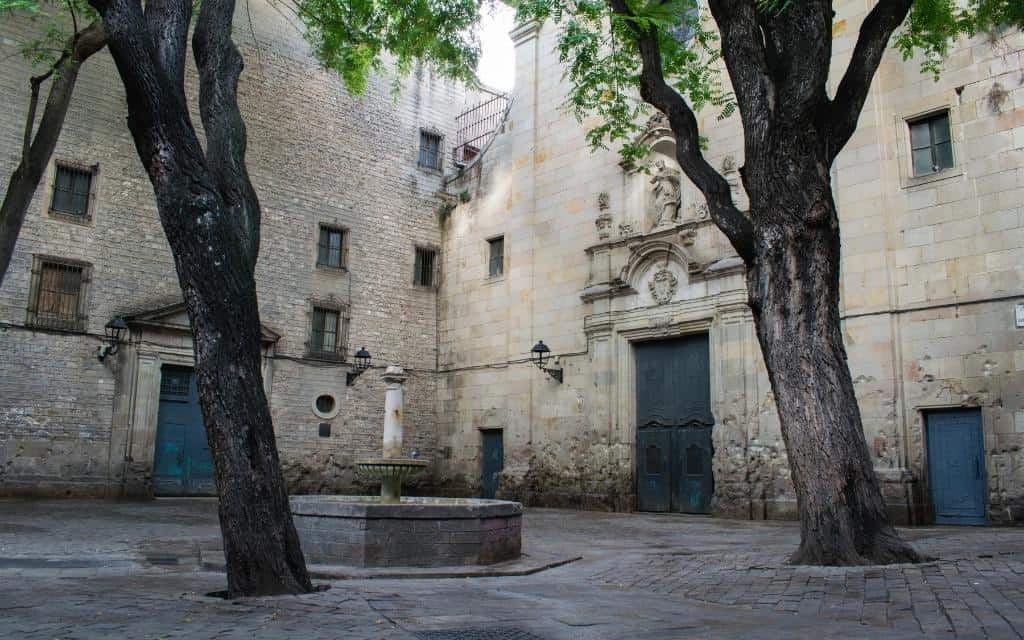
Plaça del Rei
A narrow alley leads behind the cathedral, where you turn left towards Plaça del Rei. On the square is the MUHBA, or Barcelona History Museum, where you can go underground as part of your tour.
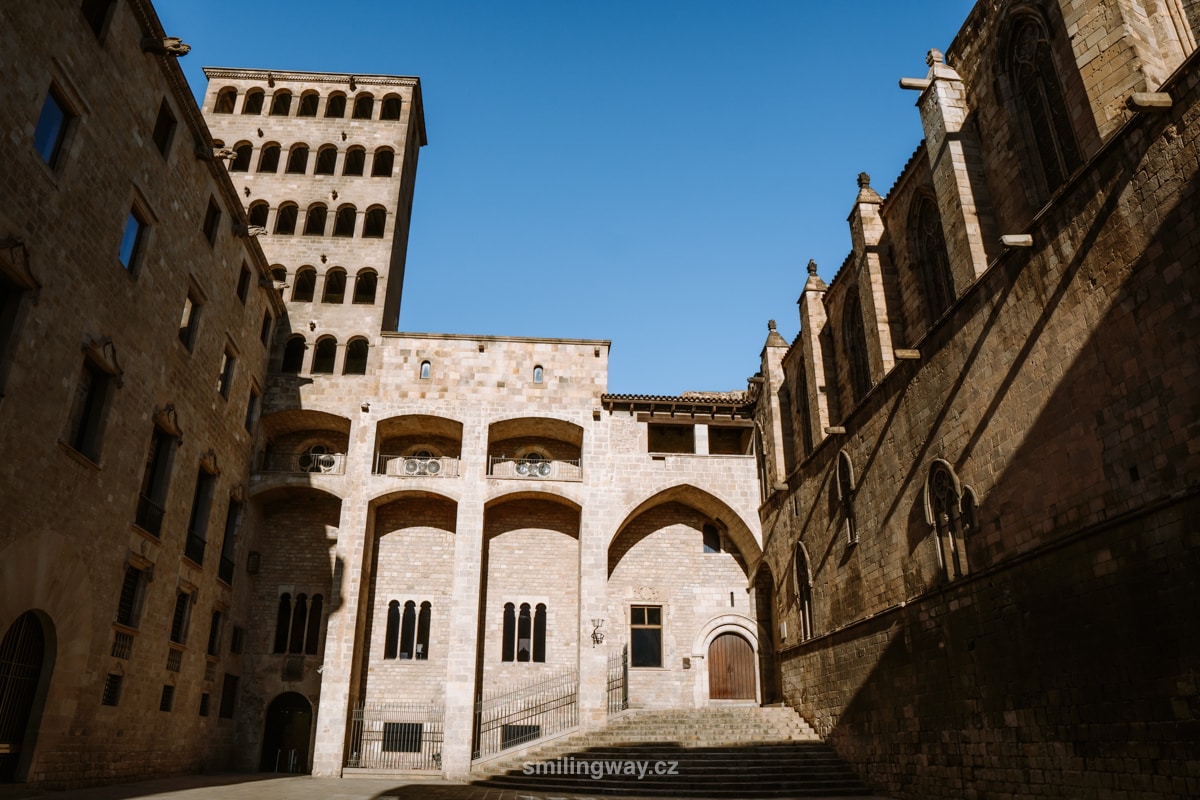
El Pond del Bisbe
From Plaça del Rei, go back behind the cathedral and follow the narrow streets to El Pont del Bisbe bridge, which connects the 2 buildings on Carrer del Bisbe. The alley leads to the open-air Plaça de Sant Jaume, home to the Catalan government and Barcelona City Hall.
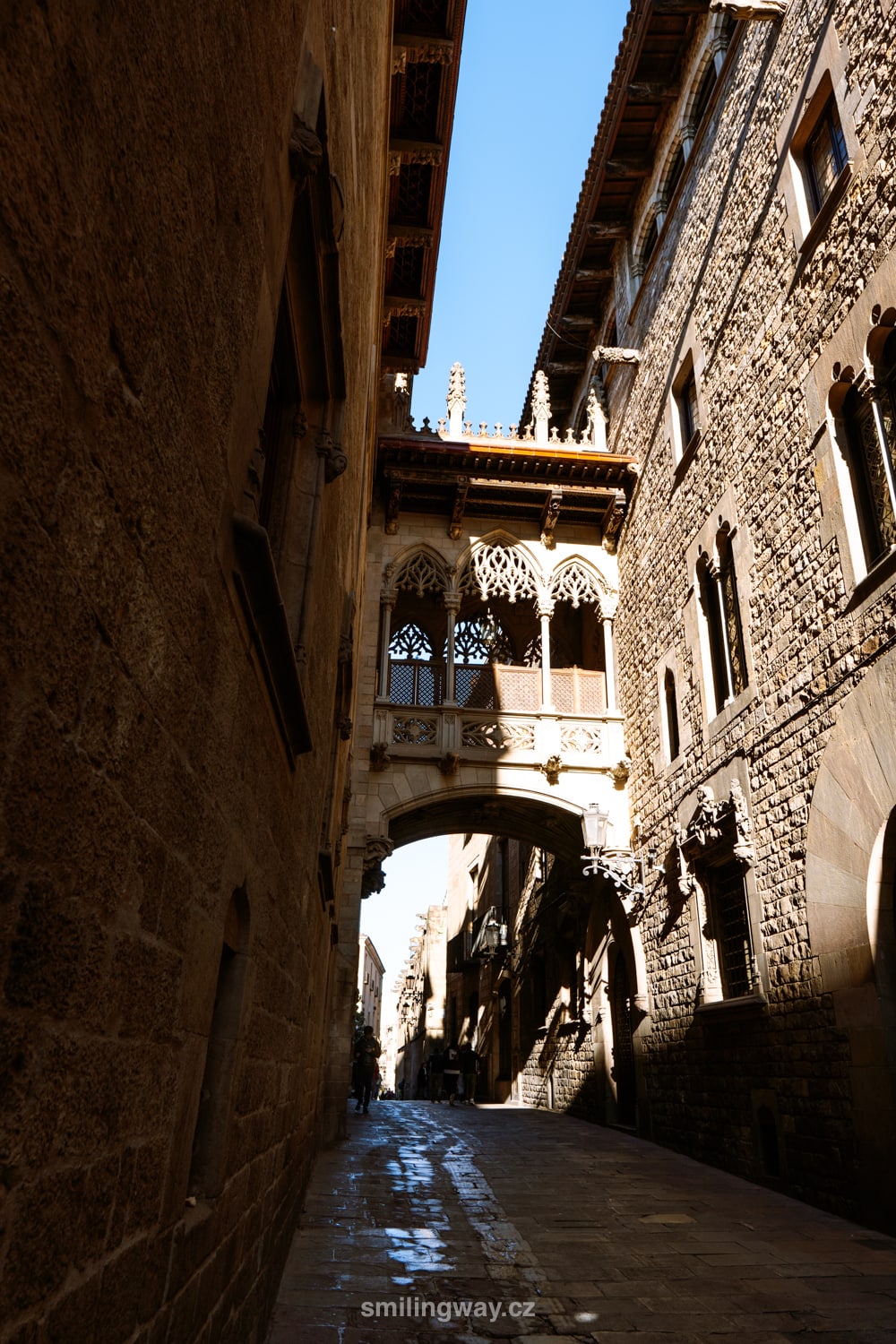
Plaça Reial
Plaça Reial is another beautiful square in the Barri Gotic, which translates to Royal Square. It is famous for its neoclassical columns and arches and, in the centre, the fountain of the Three Graces with 2 lanterns designed by Gaudí.
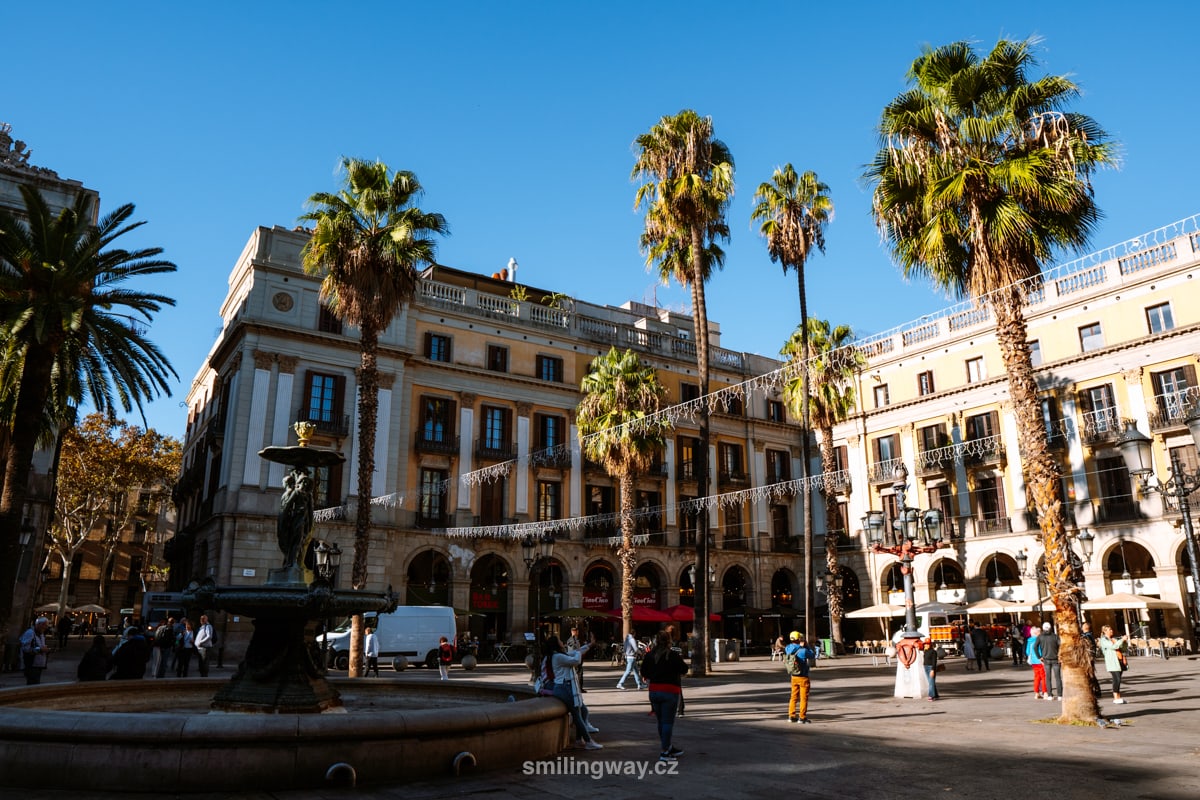
4. Relax on the beach
If you want to relax and enjoy the sun, be sure to visit one of the beaches that were created for the 1992 Olympic Games.
Barcelona has great city beaches that are free to access. Some may not be the cleanest and with the whitest sand, but generally they are of a good standard.
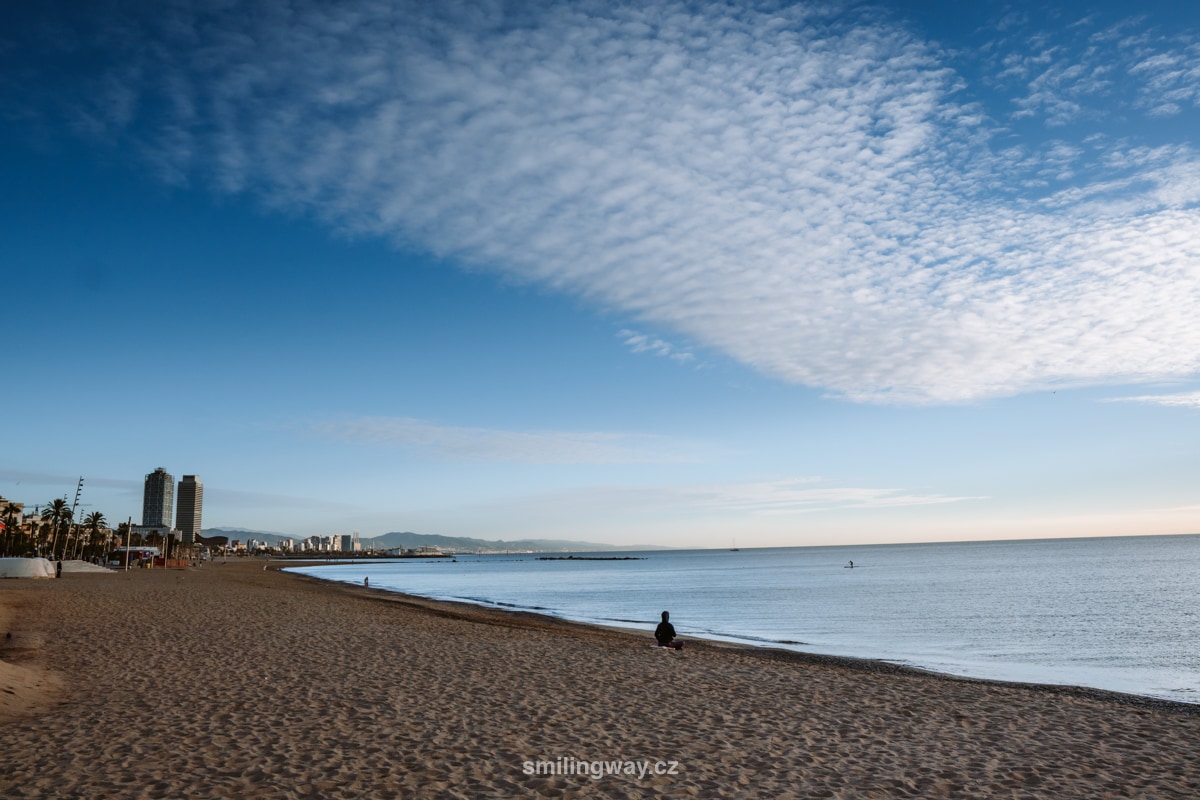
The easiest beach to reach is La Barcelonata, which is also the most visited. For families with children, the beaches of Nova Icària or Bogatell, a little further away, are ideal, as they are less crowded and the sand is finer.
The beaches are alive late into the evening. Locals and tourists alike sit in the sand, play volleyball or stroll along the promenade.
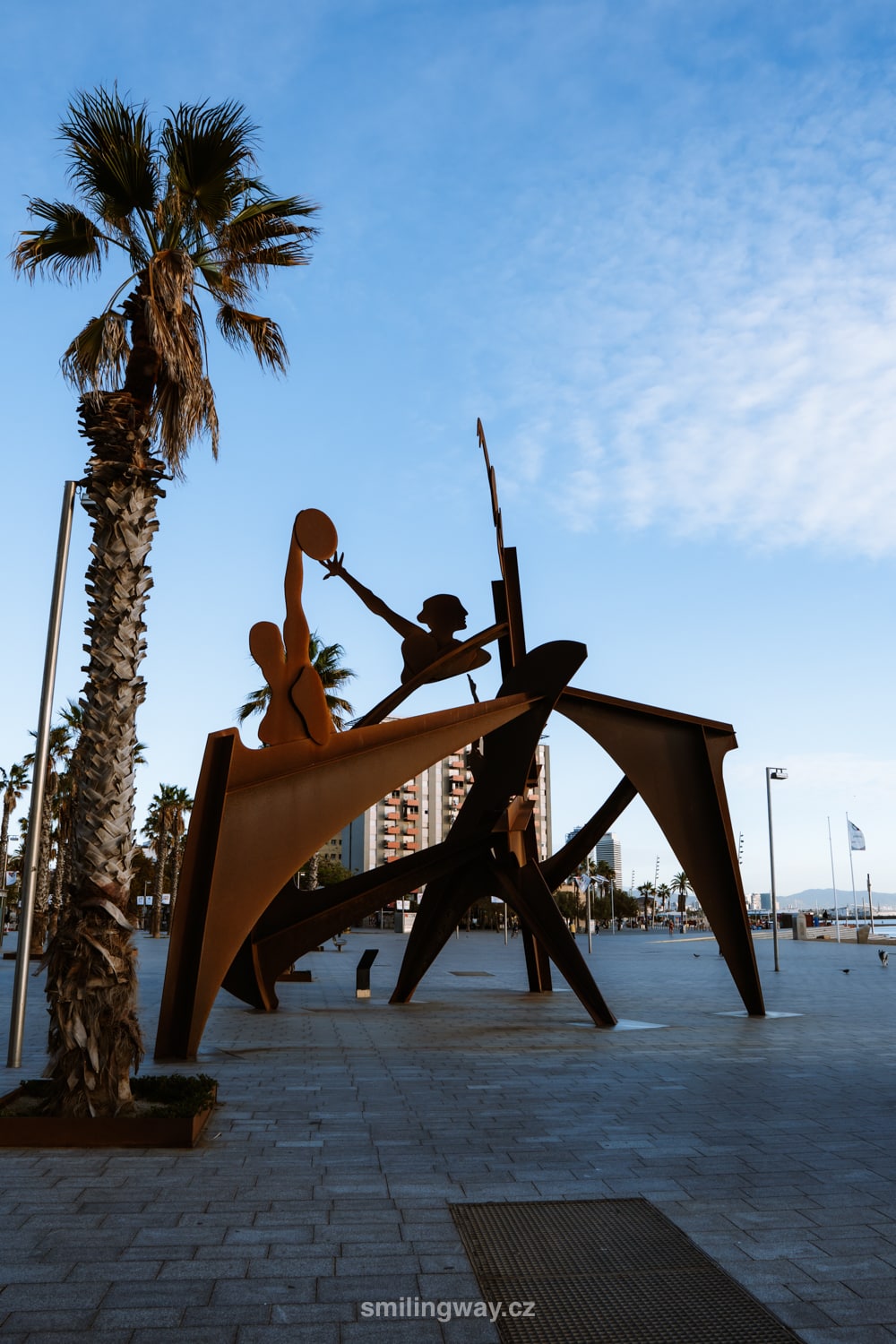
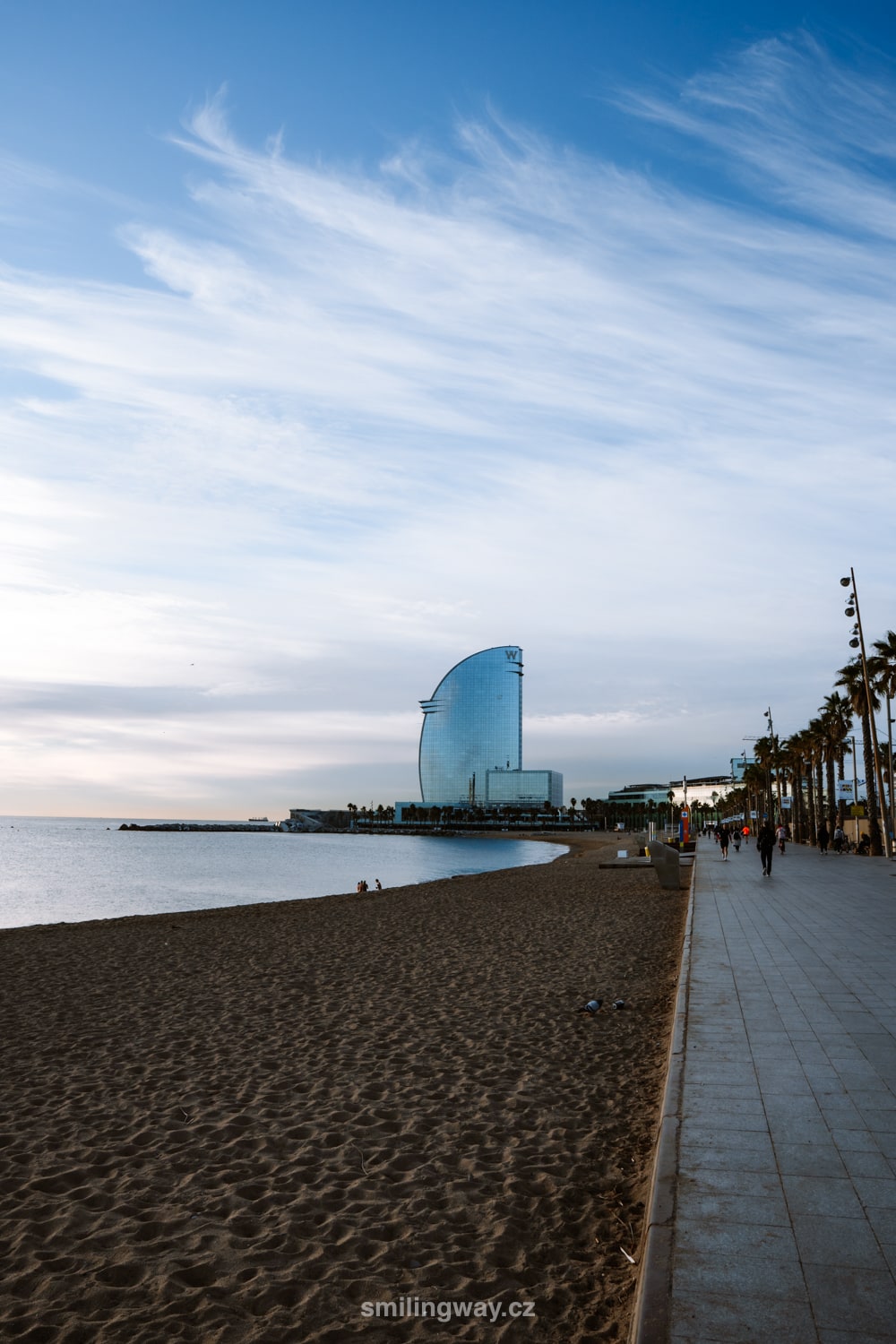
Parc de la Ciutadella
The Arc de Triomf is one of the most beautiful sights to visit in Barcelona. The Arc de Triomphe in Barcelona is different from the Arc de Triomphe in Paris or other cities – it is made of red bricks. Take a closer look and you will see reliefs about agriculture, art and trade.
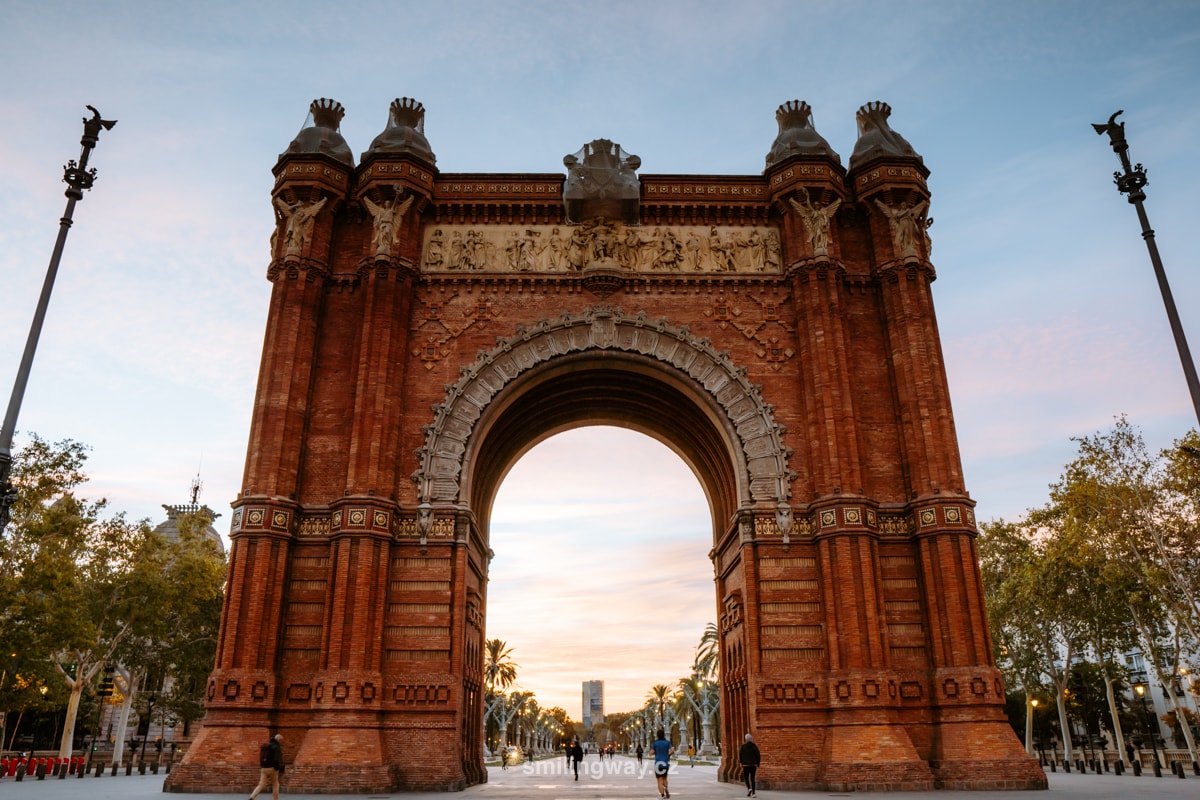
Arc de Triomf is located in the city centre and is the gateway to the popular Parc de la Ciutadella and, on the other side, to the modern part of Barcelona.
Parc de la Ciutadella is the ideal place to take a break from the hustle and bustle of Barcelona. Stroll around, watch street artists and admire the beautiful buildings, including the Catalan Parliament.
As you enter the park, you will see the beautiful Castell dels Tres Dragons building on your right. Turn left and after a few minutes you will reach the famous Baroque fountain designed by Josep Fontseré and Mestrès with the young Gaudi.
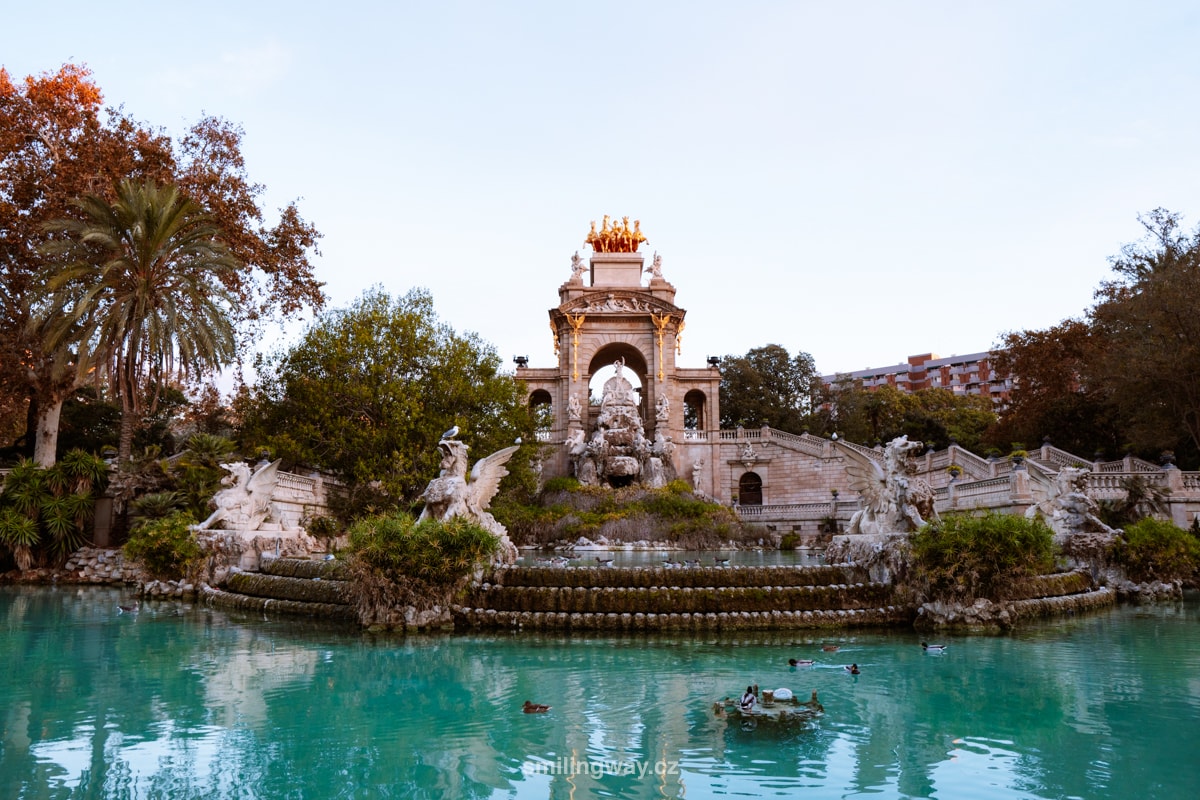
6. Climb the Montjüic hill
The Monjüic hill hides many interesting places and is an ideal place for a walk with views of the city. You can reach the top by cable car (it is not part of Barcelona’s public transport – see this article for more information about the cable car) or on foot (expect about 25-30 minutes from Plaza España).
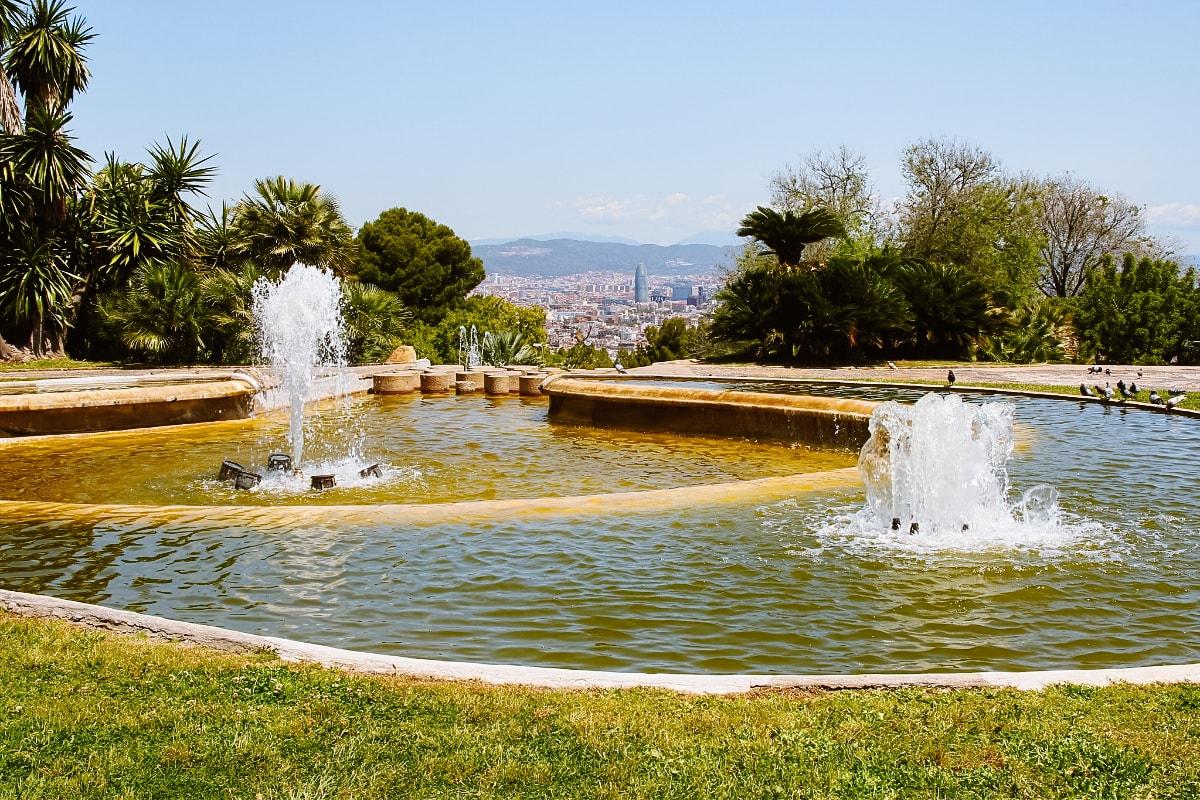
The northern slopes are occupied by terraces, fountains and neoclassical buildings from the 1929 International Exhibition.
Montjuïc is also home to the Olympic Stadium, two major art galleries – the Museu Nacional d’Art de Catalunya (Museum of Catalan and Romanesque Art) and the Fundació Joan Miró (Museum of Modern Art), and the Montjüic Fortress (paid). Learn more about Montjüic here.
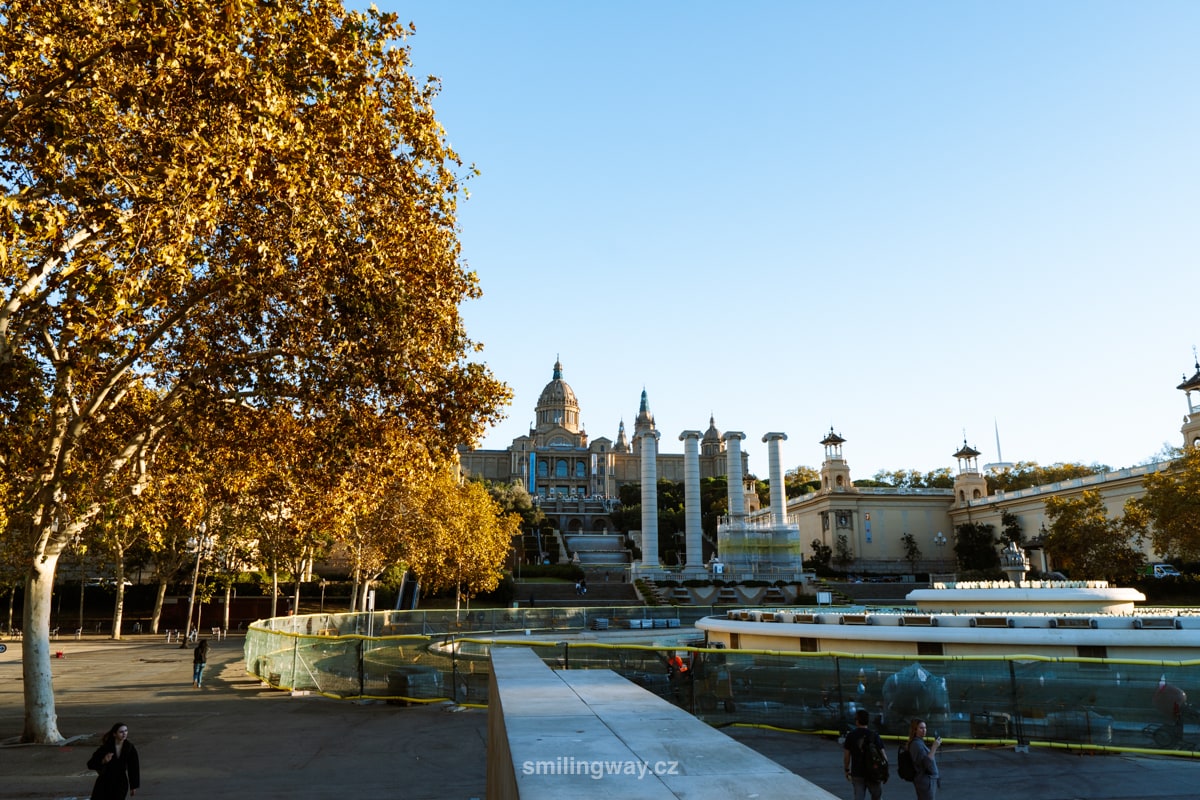
At the foot of Montjüic is the Magic Fountain, where a magnificent show of colour takes place every evening. Normally this is one of the best things to do in Barcelona for free. However, there is currently no performance due to water shortages (valid from 2023 – watch the official website for updates).
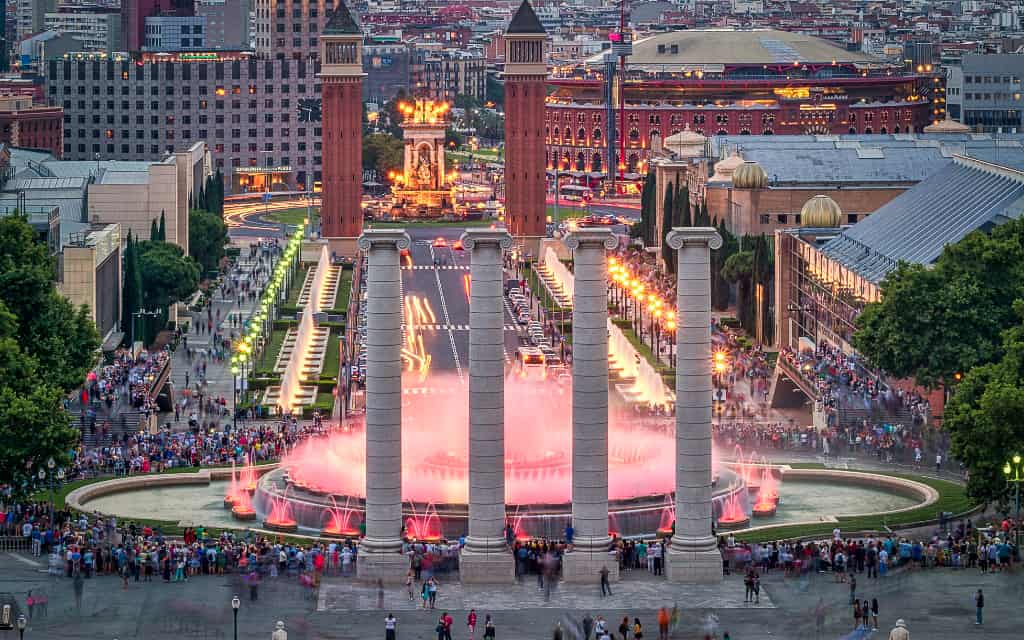
7. Take a look at Plaça d’Espanya
Plaça d’Espanya, or Spanish Square, is one of the most important and largest squares in Barcelona. It was built for the 1929 World’s Fair and is an important transport hub of the city with a large roundabout and a fountain in the centre.
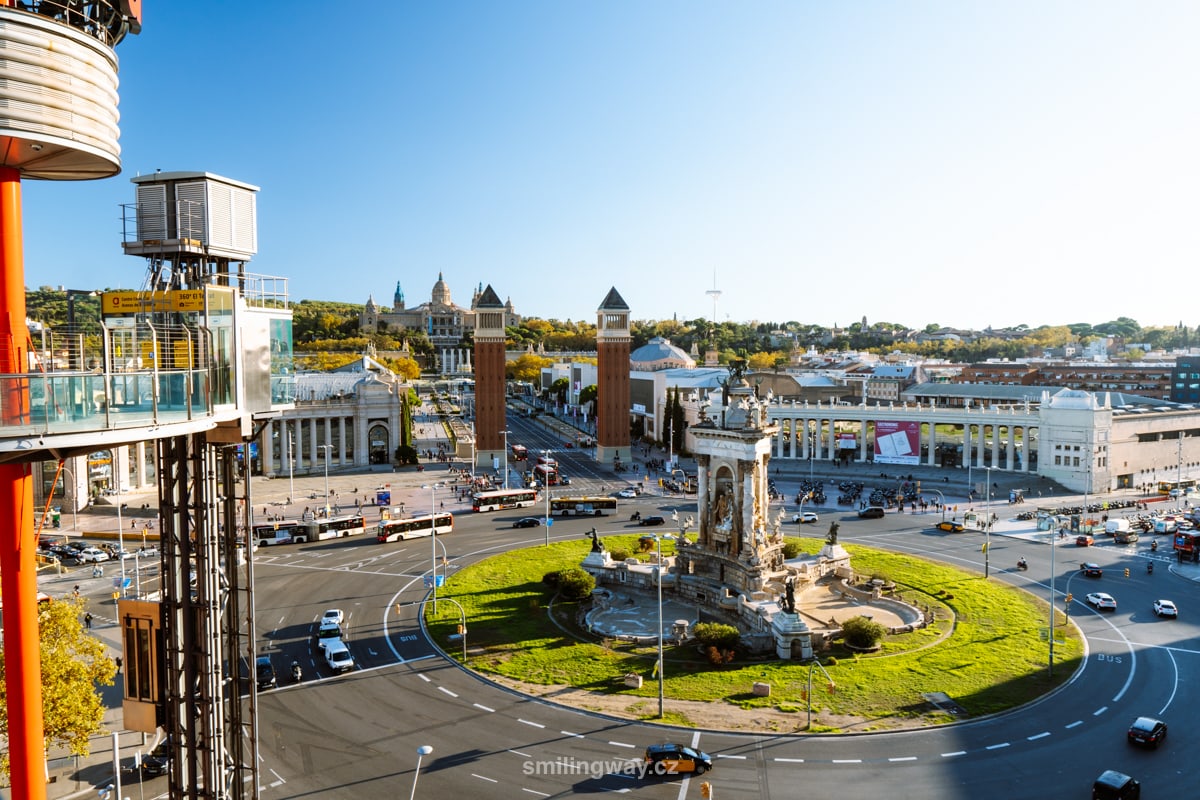
While you’re here, don’t miss the rooftop view of the Arenas de Barcelona, which was originally used as a bullring. Today it serves as a shopping centre. The viewpoint can be reached by an outdoor lift for a small fee or for free through the interior of the shopping centre.
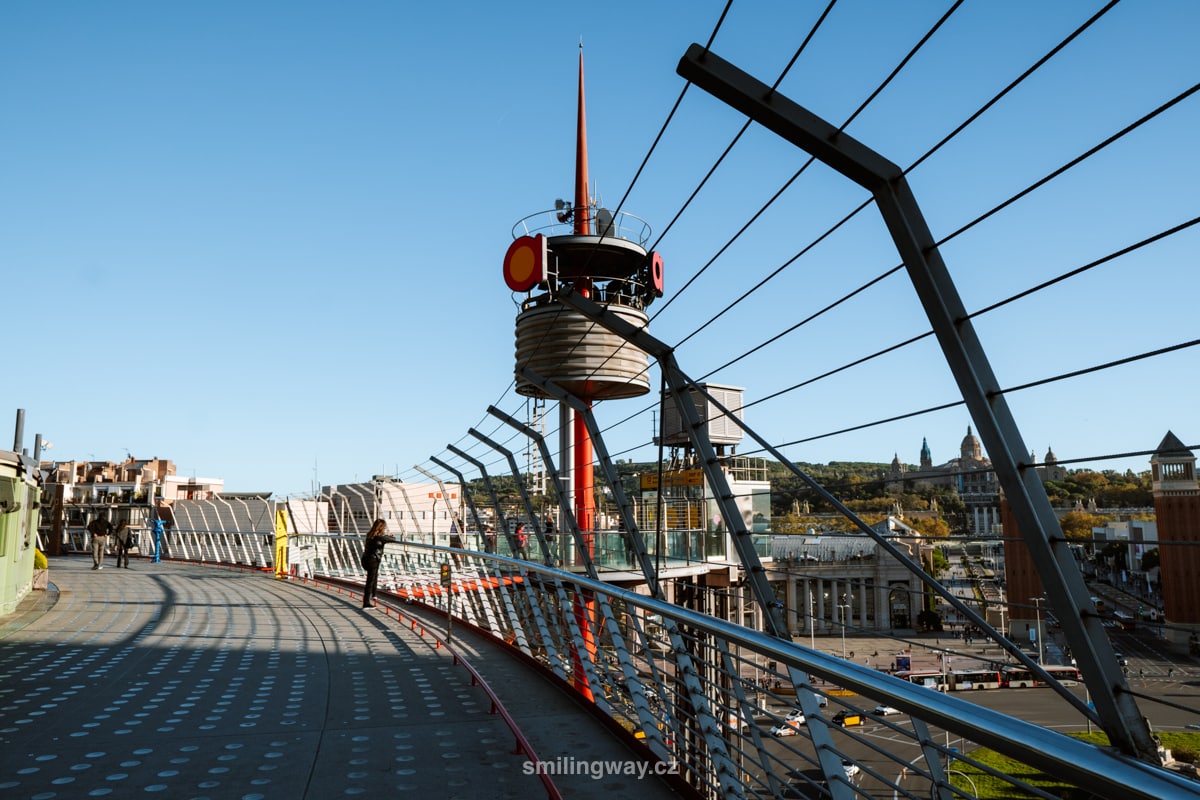
In front of the square are two important Venice-style towers, which are the entrance to the Montjuïc area – through the towers you can reach the Magic Fountain and the National Museum of Catalan Art.
8. Enjoy the view of Barcelona
Thanks to its rugged terrain, Barcelona offers great views of the city and the sea that lines the coast. One of these places is Montjüic, which was mentioned a moment ago. The view from here is mainly of the coast.
Bunkers del Carmel
Another place is Bunkers del Carmel, where young Catalans go to drink and watch the sunset. From here, you’ll have Barcelona in the palm of your hand. If you wait for sunset, you won’t go wrong.
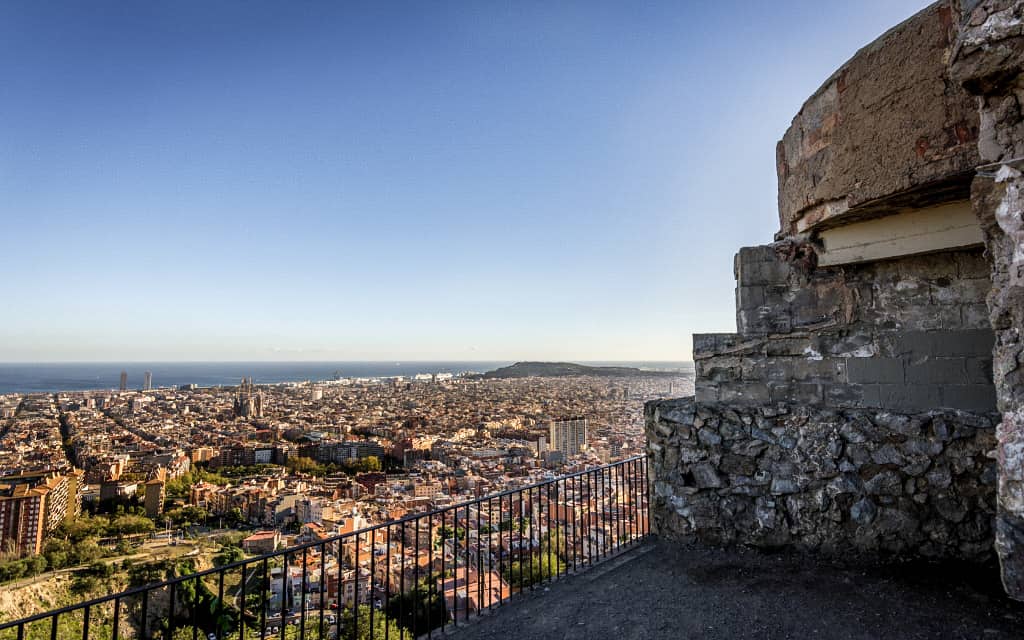
These are former bunkers used during the Spanish Civil War. This is one of the best things to do in Barcelona for free.
Just keep in mind that the locals don’t like to see tourists here as much (like some other places in Barcelona), so it’s better to blend in and enjoy the atmosphere of the place.
Getting to Bunkers del Carmel: The nearest metro station is Alfons X (line L4), which stops about 20 minutes away. After that you will climb uphill. If you want to shorten the climb, you can take bus 119 almost under the bunkers.
Park Güell
Another place with a view is Park Güell, where you have to pay to enter, but tickets are well priced considering the popularity of the park. There are long queues for Park Güell and a limited number of tickets – book your tickets in advance.
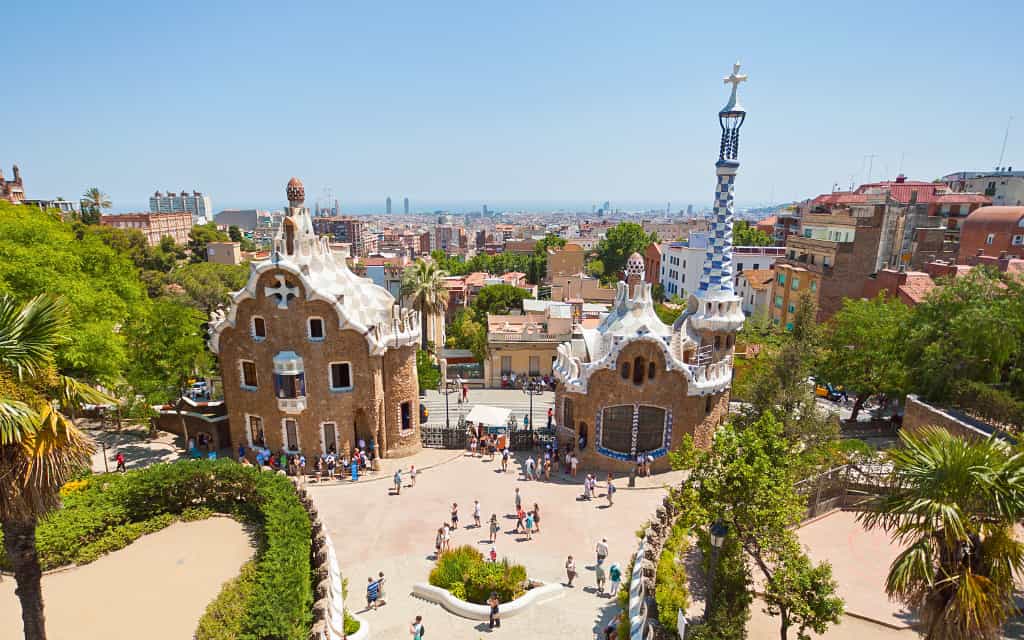
Tibidabo
If you want to enjoy Barcelona like the palm of your hand, Tibidabo is the best place to go. You just need more time to get here. Especially if you are travelling on a budget and plan to use regular tickets.
At the top of Tibidabo there is an amusement park and, above all, a magnificent neo-Gothic church that consists of two churches on top of each other. Entrance to the church is free, but if you would like to go up to the Jesus statue, there is a €5 charge for the lift.
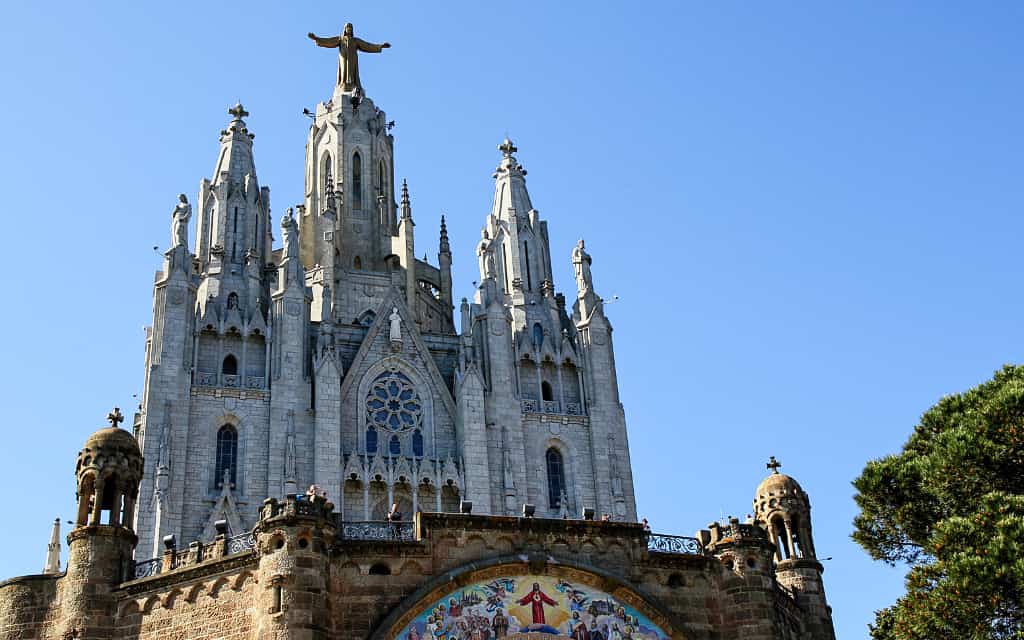
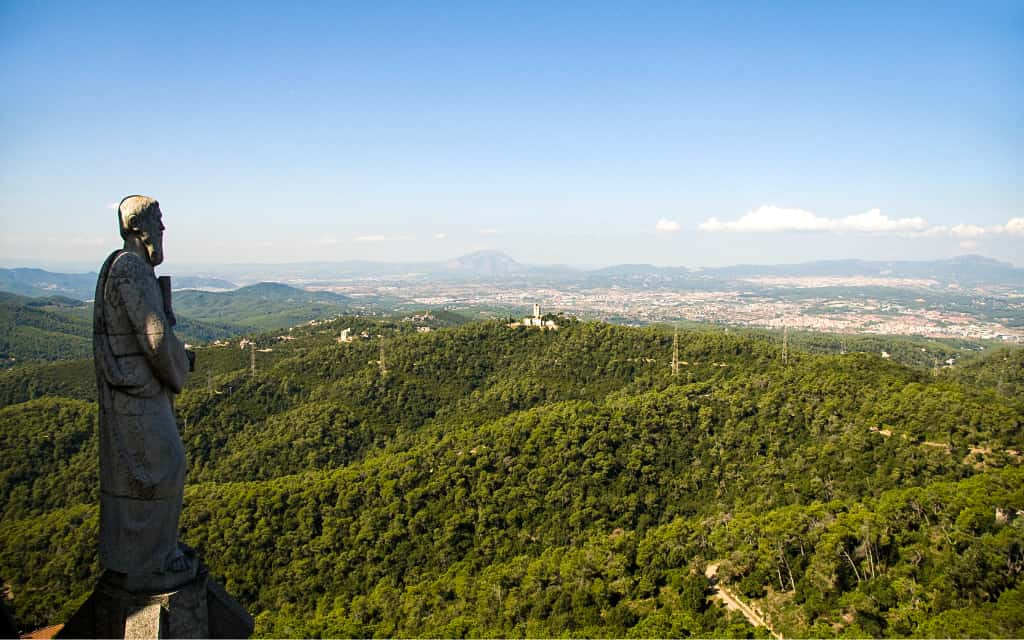
How to get to Tibidabo
- The most popular option is the historic blue tram that leaves from Avinguda Tibidabo (The tram is currently under renovation as of 2023.) You can get here by metro line L9. The tram takes you to Plaça del Doctor Andreu, where the lower cable car station is located. You can also walk instead of taking the tram – it’s about 15 minutes from the L9 metro terminus, or there are buses. The cable car will then take you to the top of Tibidabo in a few minutes (price €7.7), or you can take the cable car to the top of the mountain. you can walk (less than an hour uphill on paved or trodden paths with several views of the city).
- If you want to take Barcelona’s public transport exclusively, take the S1 or S2 suburban train to Peu del Funicular station, where you can take the cable car to Vallvidrera Superior. Bus 111 runs from the top of the cable car station to Tibidabo. You can use classic T10 or Hola BCN card which allows unlimited travel around Barcelona.
9. Wander around El Born (and sample Catalan cuisine)
El Born is a lively neighbourhood with medieval streets, great restaurants, designer boutiques and just the right atmosphere.
The Church of Santa Maria del Mar is the icing on the cake of El Born and a perfect example of Catalan Gothic architecture. It is impressive and has wonderful details. There is an entrance fee, but the church is worth seeing from the outside.
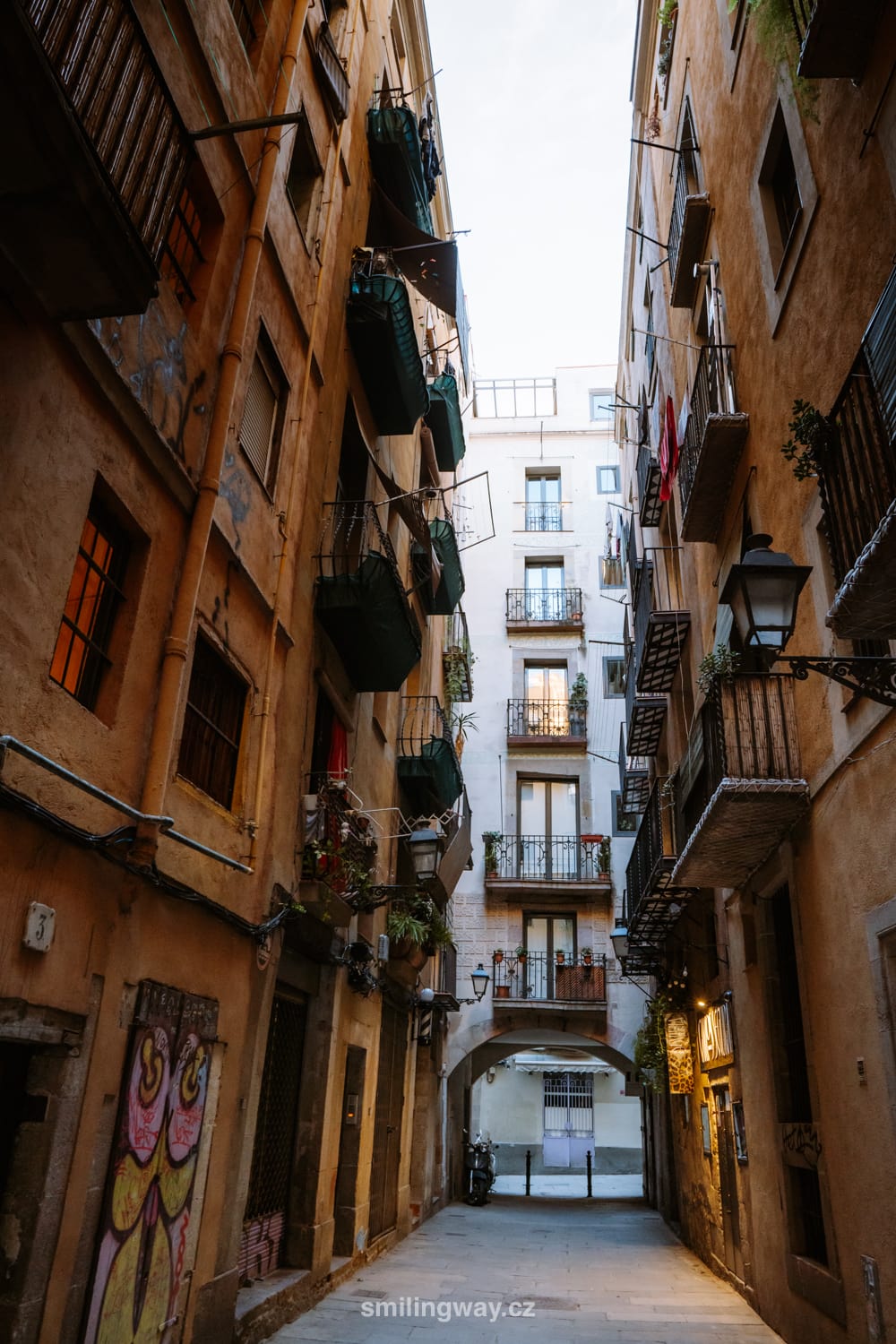
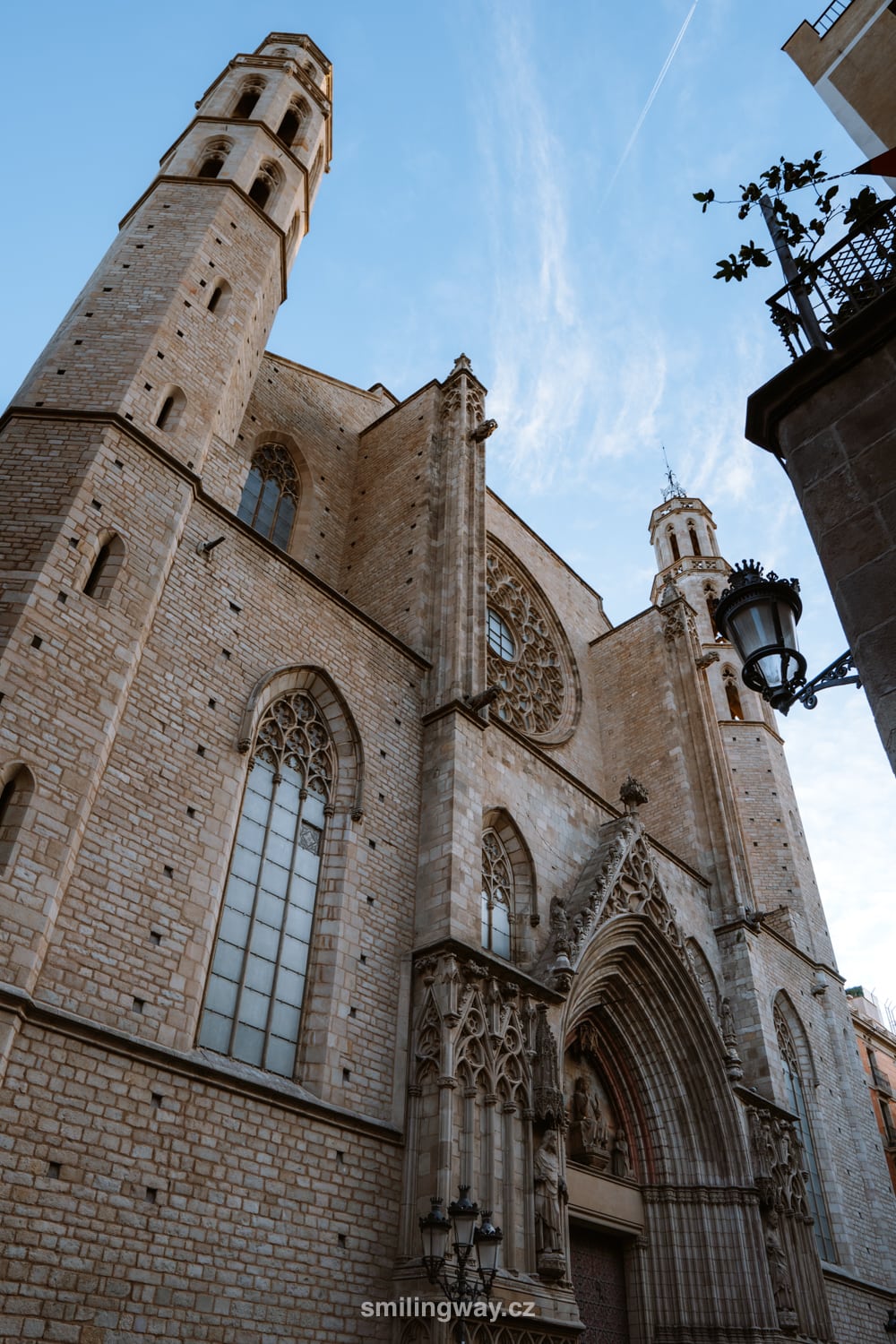
Just behind the church, the pedestrianised Passeig del Born, where medieval jousting used to take place, gives El Born its name.
Visit the El Born CCM, where you can see the excavations of the original city from the 18th century for free. century.
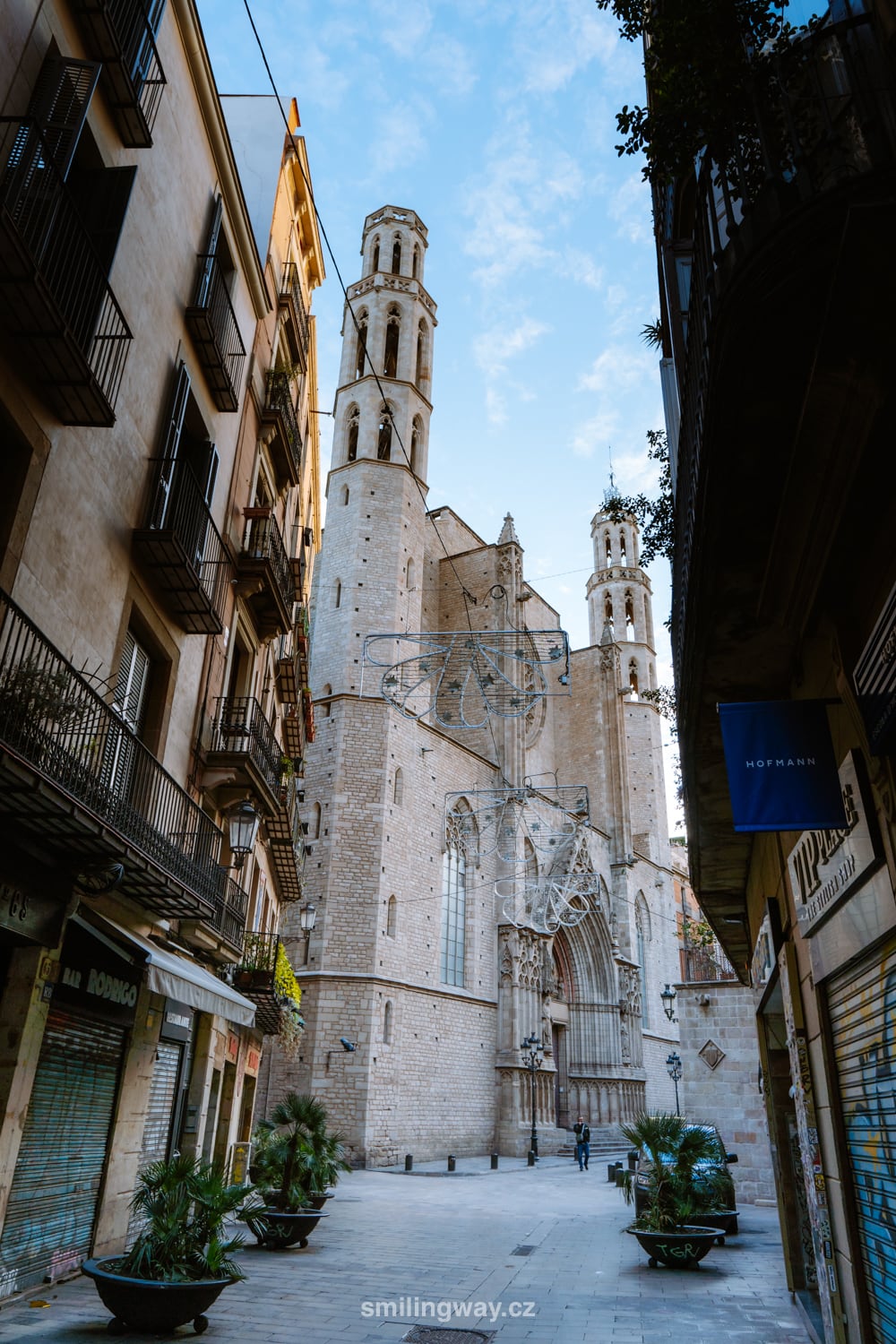
El Born is one of the best neighbourhoods to go to for food in Barcelona. And it would be a sin not to try paella or tapas in the local bars. On the other hand, avoid the restaurants along the pedestrianised La Rambla, which are very touristy and far from authentic. Or continue from La Rambla to the El Raval district, where you’ll find more great options for where to eat in Barcelona.
10. Take a walk along Barcelona’s waterfront
Barcelona has a beautifully landscaped waterfront that is miles long. You can start in the old Port Vell harbour in the city centre, continue past La Barceloneta and the famous W Barcelona hotel and walk (cycle) to Port Fòrum, which will entertain you with its innovative design.
The coastline is lined with golden sand beaches, recreational areas and plenty of restaurants and bars.
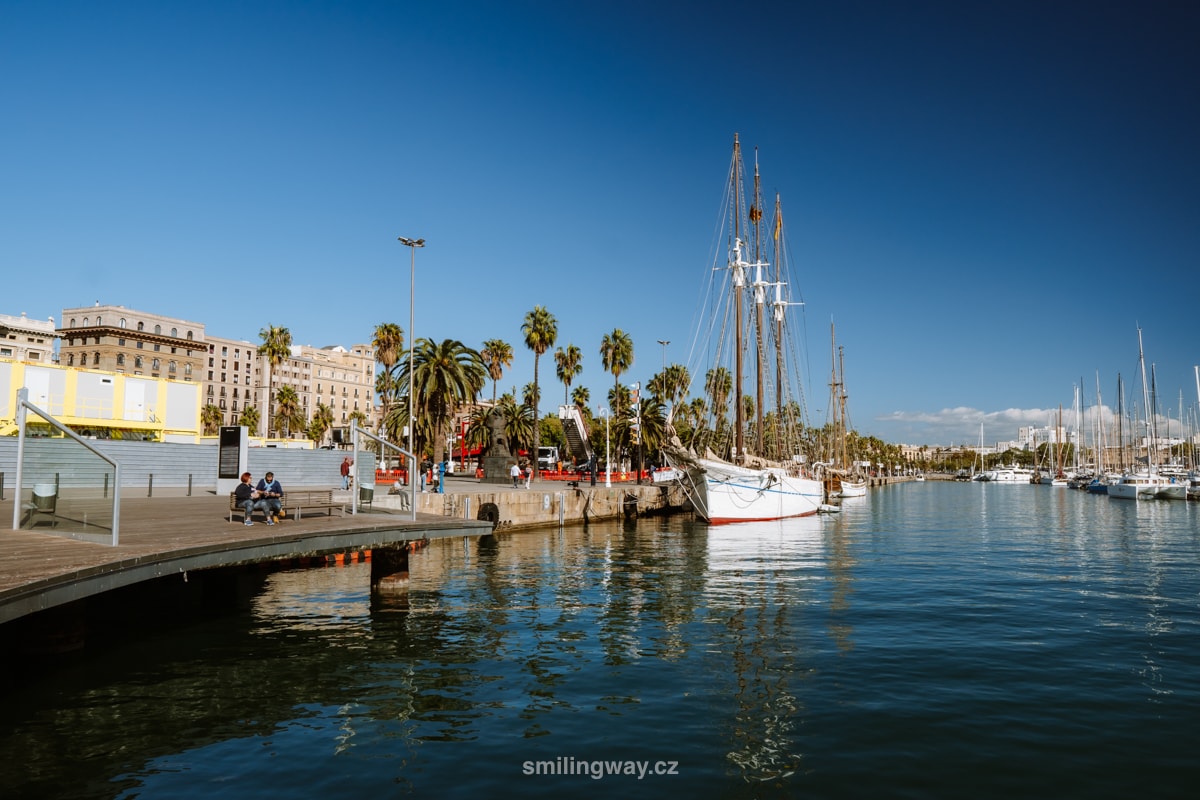
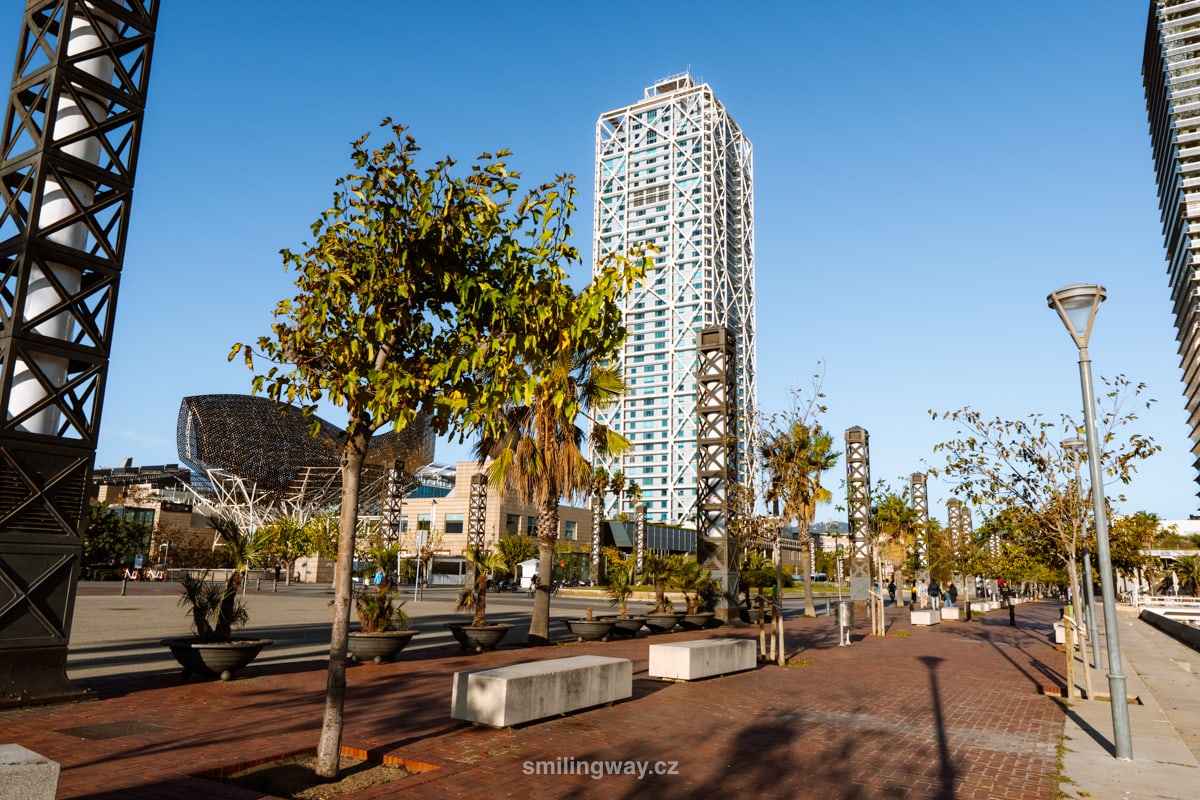
Budget hotels in Barcelona
If you’re travelling on a budget, check out these options for cheap accommodation in Barcelona:
- Hostal Sans – modern hotel near Plaça de Sants with clean and well-kept surroundings and excellent access to the centre and the airport
- Hotel River – cheap hotel a short walk from La Rambla
- Hostal la Palmera – cosy guesthouse in the historic centre of the city
- Hotel Paral-lel – hotel at the foot of Montjuïc with excellent access to the centre and the airport
- Hotel Orangine – a four-star hotel with a rooftop pool, located near Camp Nou and with good access to the airport and the city centre
- easyHotel Barcelona Fira – Sustainable, modern hotel with good access to the airport
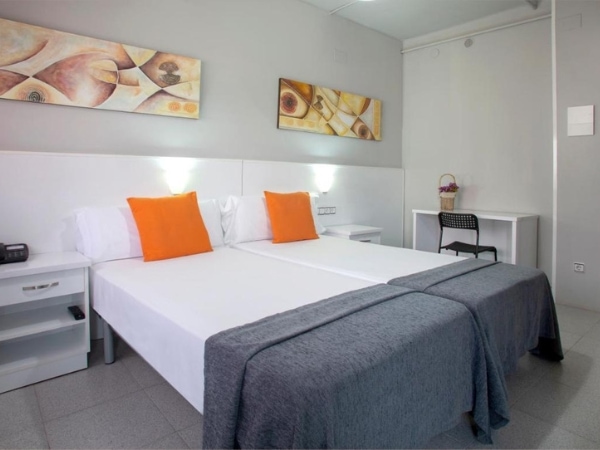
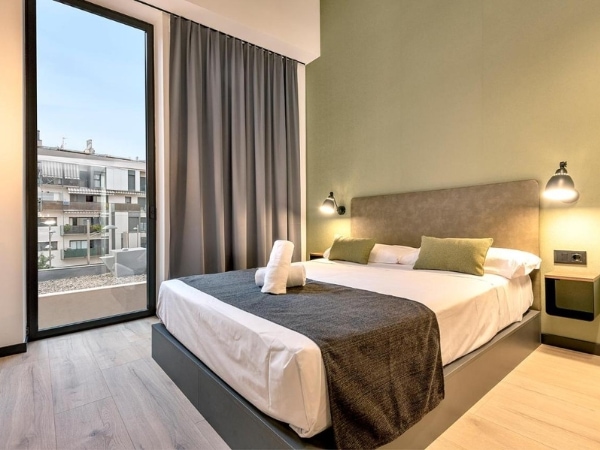
How to get around Barcelona?
Transport in Barcelona is no different to other European cities. It is reliable, modern and comfortable. We have compiled a detailed guide to transport in Barcelona where you will learn everything you need to know.
To get from the airport to Barcelona, you can use the metro, trains, express buses and regular TMB buses. In the article How to get from El Prat Airport to Barcelona city centre you will find a detailed overview for each mode of transport (time, price, where to stop, etc.).
Plan your trip quickly and easily. If you buy something through our links, we get a small commission. You pay nothing extra. Thank you!
These were the 10 best things to do in Barcelona for free. Do you have a question? We’ll be happy to answer it in the comments below. Have a safe journey!
More information about Barcelona
BARCELONA ITINERARY: Plan your trip with our 3-day itinerary for Barcelona. Check out the description and itinerary map on how to spend 4 days in Barcelona.
In a separate article you can read about the things to do in Barcelona (photos, map, practical information). In the next article we share tips on things to do in Barcelona with children.
We have also prepared a article on how to visit the Sagrada Familia (attractions, how to avoid queues, entrance fees, etc.)
BARCELONA GUIDE: Here is a detailed guide to Barcelona and everything you need to know about transport in Barcelona. We’ve put together tips on the best places to stay in Barcelona (the best areas and hotels). In the next article we share tips on how to save in Barcelona.
SPAIN: In our list of the most beautiful places to visit in Spain, we give you tips on what to see in Spain.
VALENCIA: Valencia is another beautiful city in Spain. We’ve put together a complete guide to visiting Valencia, including tips on the best things to do in Valencia.
